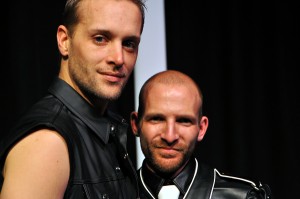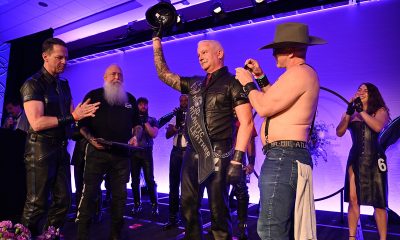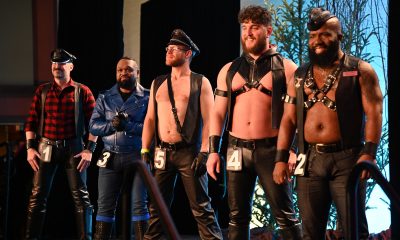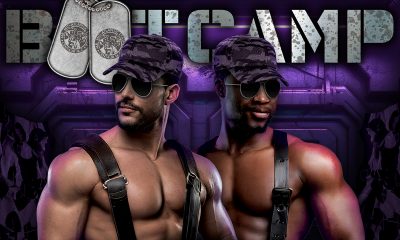Arts & Entertainment
Fetishes and festivities
This weekend’s Mid-Atlantic Leather convention has new location
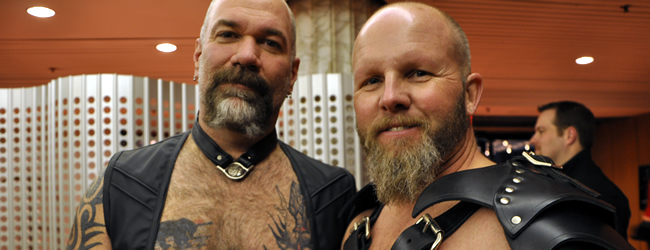
Mid-Atlantic Leather Weekend 2011
Hyatt Regency Hotel Capitol Hill
400 New Jersey Ave. NW
Friday
* Registration — Ballroom level foyer — 4-10:30 p.m.
* Leather Exhibit Hall — exhibit area, Ballroom Level 5-11 p.m.
* Opening Reception (cash bar) — Yorktown Ballroom — 9-11 p.m.
* MAL Bar Crawl Bus — 10 p.m.-2 a.m.
Saturday Jan. 15
* Registration continues — 10 a.m.-5 p.m.
* Leather Exhibit Hall continues — noon-8 p.m.
* Leather Cocktails — Regency Ballroom — 6:30-9 p.m.
* CODE Party — The Crucible — 9 p.m.-2 a.m.
* MAL partner event — discounted admission
for MAL 2001 Full Weekend package holders
* MAL Bar Crawl Bus -—10 p.m.-2 a.m.
Sunday
* MAL Brunch — main lobby — 10 a.m.-noon
* Leather exhibit hall continues
* Mr. Mid-Atlantic Leather Contest — Regency Ballroom — 1 p.m.-5 p.m. (separate tickets are available for this event)
* Reaction — 9:30 Club — 10 p.m.-5 a.m. (separate tickets are available for this event)
The Bootblack Brigade hosts a bar night Saturday starting 10 p.m. at Green Lantern, 13335 Green Court, N.W. — no admission fee
And at D.C. Eagle, 639 New York Ave. N.W., the MAL Weekend welcome begins 7 p.m. Friday and continues through Monday starting at 8 p.m.
More details are here.
It’s back for another year — Mid-Atlantic Leather Weekend.
Once again, Washington becomes this weekend a fantasy scene of leather chaps and cigars, slave collars and chains — with hankie-flagging people seeking the endorphin rush of erotic heat as they cruise hotel lobbies and prowl upstairs corridors for private play parties or hunt exotic thrills at live demos of kink at the Code party. But it’s also the chance to meet old friends and make new ones within the special brotherhood (and sisterhood) of the men and women who embrace leather.
And this year’s gathering happening this weekend, this time at a new hotel, promises once again, according to the sponsoring organization, the Centaur Motorcycle Club of D.C., on its website, to be “one of the hottest leather/fetish events in North America and the world’s largest leather club run.”
“Thousands of leathermen, gearheads, kinksters, rubber freaks and even curious novices from all over the world,” says the promo material, will “come to the nation’s capitol for a weekend of hot, horny fun.”
“We’re literally looking for thousands of people to come for the weekend,” says a confident Larry Barat, the Centaur M.C. promotions chair for the weekend. About 600 or 700 people are expected to register for the full, three-day package, he says, “but we anticipate 2,000 or 3,000 or possibly more to participate in side events organized around the weekend and at the bars,” especially, he said, at the D.C. Eagle and Green Lantern.
The three-day package is $180 in advance or $200 at the door, a package including access to all events and exhibits, said Barat, who also pointed out that “an important new change for MAL 2011” is that entry into the weekend area at the hotel, including for the Leather Exhibit Hall but not the special events, will now require a “Weekend Admission Pass.” The cost for such a three-day pass is $25 if purchased on Friday, $20 on Saturday, or $10 on Sunday or alternatively $10 for any one of those days only.
The D.C.-based Centaur club, now in its 41st year, according to Barat currently consists of about 30 active members. It has sponsored MAL, now in its 31st year, from the beginning. After more than a decade of being housed at the Washington Plaza Hotel at Thomas Circle, it moves this year to the Hyatt Regency on Capitol Hill, because “we simply outgrew that hotel,” Barat says. The Washington Plaza has only 360 rooms, while the Hyatt has about 800.
“Obviously with a new home for MAL, we’re excited about that, but also a little nervous,” he adds, but he has been meeting with Hyatt staff, along with other Centaur event planners, and believes everybody feels that the weekend will be a success.
Another MAL Weekend coordinator, its chairman and fellow Centaur member Patrick Grady met Monday for another meeting “with about 30 hotel managers in the room,” and Grady says “everybody at the Hyatt is very enthusiastic indeed.”
This year, they have booked only about three-quarters of the Hyatt’s rooms because, says Barat, “we were trying to be a bit conservative this year and not over-extend ourselves.” Even so, weekend registration has spilled over into rooms reserved at the Liaison Hotel across the street.
All MAL attendees will be on the same floors. Organizers hope next year to fill the entire hotel.
Grady says his first MAL Weekend began when he joined the Washington Plaza Hotel as its director of catering in 1997 and a month later hundreds of MAL Weekend participants thronged the hotel, the second year at that venue, and he got his first real look close-up at the leather community.
“I was a newbie in ’97,” he says, “and I didn’t know their community even existed.”
He was taken in by the friendly vibes and soon, he says, he began to frequent the Eagle and then to hang out with the Centaurs. By 1999 he had sunk his own roots deep into the leather world.
Grady says that after that first weekend, “I couldn’t wait to see everybody back in ’98,” and he was drawn to the sense of community that he found, especially in the Centaur MC. Yes, he knows that some LGBT people are uncomfortable with the more taboo aspects of the leather world — the BDSM sexuality — but he says the reality is that the leather world — and the Centaur club — is “very diverse.”
“We have members who have motorcycles and those who don’t, who are large and skinny, tall and short, and the only real common denominator is that we like one another,” he says. “Some are hard-core leather folk and others are just out for a good time.” But he admits that “when we gather together sometimes we are a little much for some people — we tend to be very gregarious.”
His objective this year is simple: “to make new friends and renew old acquaintances,” a goal echoed by Barat, who says “our aim is to have fun and make sure everybody who comes has fun, so they can meet new people and explore new things.”
The signature events, says Barat, are the Leather Cocktails reception Saturday evening, the buses for the MAL bar-crawl, the CODE party at the Crucible S&M club Saturday night into the wee hours of Sunday morning, the Mr. Mid-Atlantic Leather Contest Sunday afternoon, and the finale event, the Reaction dance at the 9:30 Club from 10 p.m. Sunday until 5 a.m. Monday. Throughout the entire weekend also, another big draw is the Leather Exhibit Hall located on the hotel’s Ballroom level, with dozens of vendors of gear, books and other paraphernalia.
The MAL Weekend in 1998 was “the first big leather event” he ever attended, though he had lived a leather lifestyle “on and off” since he was 19. Now 50 and a U Street resident for the past seven years, by day Barat works on international public health issues for the U.S. Government.
For him, owning a bike is important to the leather lifestyle, and though he recently sold his own Harley Davidson “Fat Boy,” now he says he can’t wait until the weather gets warm again to get his next new bike. Though he says another D.C.-based club, the Spartans, “are more into motorcycles,” the Cenatur M.C. still sponsors runs two or three times a year, usually to Skyline Drive and into West Virginia and back.
Like Grady, Barat was won over by the welcoming vibes of community he felt at his first MAL Weekend: “I was really kind of shocked at how friendly everyone was,” and how eager people were to teach him about the things he didn’t know, and he also began to understand the wide variety of lifestyles subsumed under the leather label.
The gay male leather subculture has existed, according to most accounts, since the late 1940s, when it grew out of gay men who had typically worn uniforms during World War II and mustered out and were looking for a way to sustain the homosocial world and its rituals and rules of masculine identity they had experienced during wartime. Soon these men found their way into the culture of biker clubs, and for them the lure of leather signified a code of dress rooted for most — though not all — in sexual activities, often defined by the sexual practices loosely grouped under the label of BDSM.
“Leather is a term that includes dressing up and getting into sexual scenes when dressed up, acting out certain sexual fantasies like getting flogged, at one end of the spectrum, but you don’t need to dress for BD events,” Barat says.
At the other end of the spectrum, he says, people just like the feel of leather and the thrill of the road and the ride.
“And it’s everything in between,” he says,”plus, it’s not just leather alone anymore – there’s rubber, there’s sports-gear, there’s uniforms. And now there’s also a lot of young guys into dressing up as super heroes and comic book heroes.”
“It’s a whole range of of people and the nice thing about the community is that it’s very accepting,” Barat says. “You see a guy in full leather gear talking to a guy dressed up like Batman talking to a guy dressed up in full rubber.”
For many, participation is a chance to distinguish themselves from mainstream sexual activities. For some it can mean immersion in sexual kink. For others, just wearing the trappings of black leather is the main point, an erotic fashion statement expressing heightened masculinity.
The pioneering gay motorcycle clubs — the Satyrs of Los Angeles, established in 1954, and others like the Warlocks of San Francisco — reflected that same sense of disaffection with the postwar mainstream. It also provided an archetype for gay men who resisted effeminate stereotypes. For years, Larry Townsend’s “Leatherman’s Handbook” was the guide by which rank in the leather community — slave, boy, sir and master — was determined.
But by the 1980s, and perhaps even earlier, a rebellion arose against old guard role rigidity, and instead there was a new emphasis upon choices and personal self-identity, in which a person might consent to begin and end as either slave or master or switch back and forth. In this new world of greater flexibility, leather practitioners defined themselves as “new guard,” and an increasing number of pan-sexual clubs evolved as well.
“There’s a generational aspect to it,” Barat says. “The old guard has to do with fixed attitudes concerning dominance and submissiveness, and in the old guard ‘D’ and ‘s’ is not just something that one does in sexual play, but something one lives 24/7.”
He says it’s now more flexible and all a matter of self-identification, not following rules.
Barat says he is a good example of this transition.
“I began as old guard and in the past I identified as a boy and more recently as a sir, but now as I get older I’ve stopped labeling myself, and now I see myself as a new guard kind of guy.”
As for the Centaurs, he says that some are into BDSM and others are not, but it’s not a primary focus of the club.
“Some of us wear leather and are into gear and not so kinky, and there others who are kinky and don’t necessarily wear a lot of leather.
Meanwhile, pop culture itself has absorbed the look of leather and the feel of erotic alternatives. Witness the numerous popular images of Elvis from the 1960s fully clothed in black leather and then 1970s heavy-metal bands such as Kiss, Black Sabbath and Judas Priest who were cloaked in leather. The latter’s lead singer Rob Halford, himself openly gay, wore a leather costume on stage as early as 1978. Soon codpieces and even harnesses proliferated on metal-rock costumes, as such gear became appropriated by internationally successful bands like the L.A. metal band Motley Crue.
Now numerous lesbians also identify as leatherwomen and a leather pride sticker adorns the guitar of singer Joan Jett. San Francisco leather and lesbian activist Pat Califa co-founded one of the first lesbian S&M groups, Samois, and became a prolific contributor to lesbian BDSM literary erotica and sex handbooks. Leather and Lace, an “old guard” woman’s BDSM social group, was founded in Los Angeles in 1980, and in New York City there was LSM – the Lesbian Sex Mafia.
Another demographic shift in leather, says Barat, has come as younger leathermen and leatherwomen enter the worlds of leather kink, fetish and gear. It used to be mostly men over 40 graduating into the leather lifestyle, he says, “but now guys get into this lifestyle at a very young age and we’re seeing guys at our events in their early twenties.”
Barat admits, however, that leather “was once so taboo and is still not fully accepted within the larger gay community.” He hopes these attitudes are changing, but that “large parts of the gay community are still very intolerant of leather folk.” He says “there are very conservative gay people, who think we should all be monogamous, live in the suburbs, have children and go to church.”
Several entertainment guests will perform. Comedy duo Dick and Duane (Richie Cohen and Duane Tragis) are slated along with the traditional Mr. MAL 2011 contest Sunday afternoon and the Reaction party at which DJ Susan Morabito will spin.
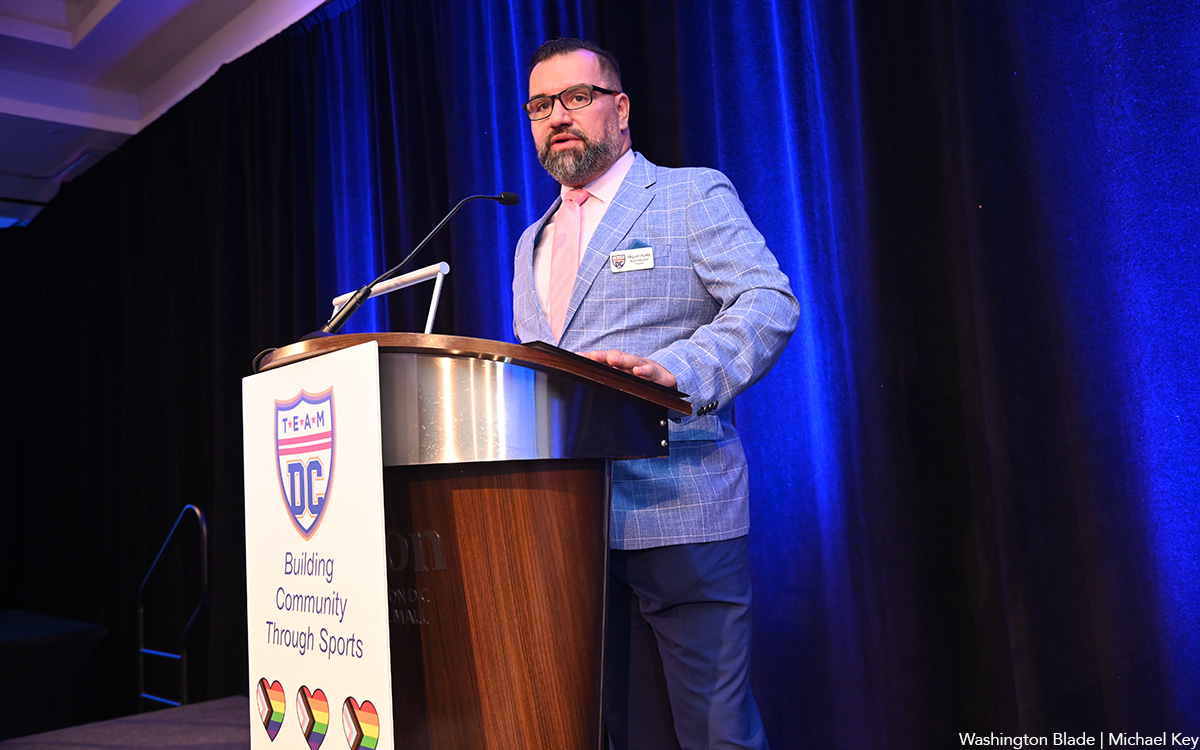
Team DC, the umbrella organization for LGBTQ-friendly sports teams and leagues in the D.C. area, held its annual Night of Champions Awards Gala on Saturday, April 20 at the Hilton National Mall. The organization gave out scholarships to area LGBTQ student athletes as well as awards to the Different Drummers, Kelly Laczko of Duplex Diner, Stacy Smith of the Edmund Burke School, Bryan Frank of Triout, JC Adams of DCG Basketball and the DC Gay Flag Football League.
(Washington Blade photos by Michael Key)
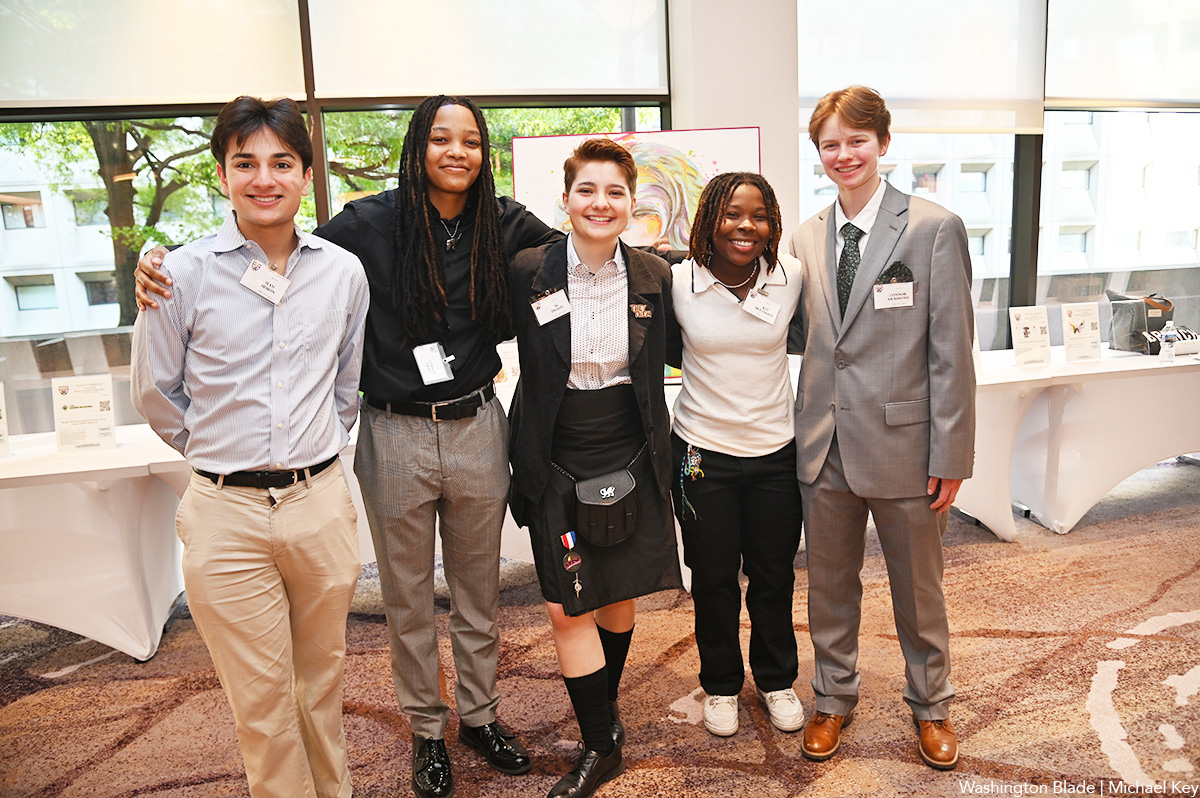
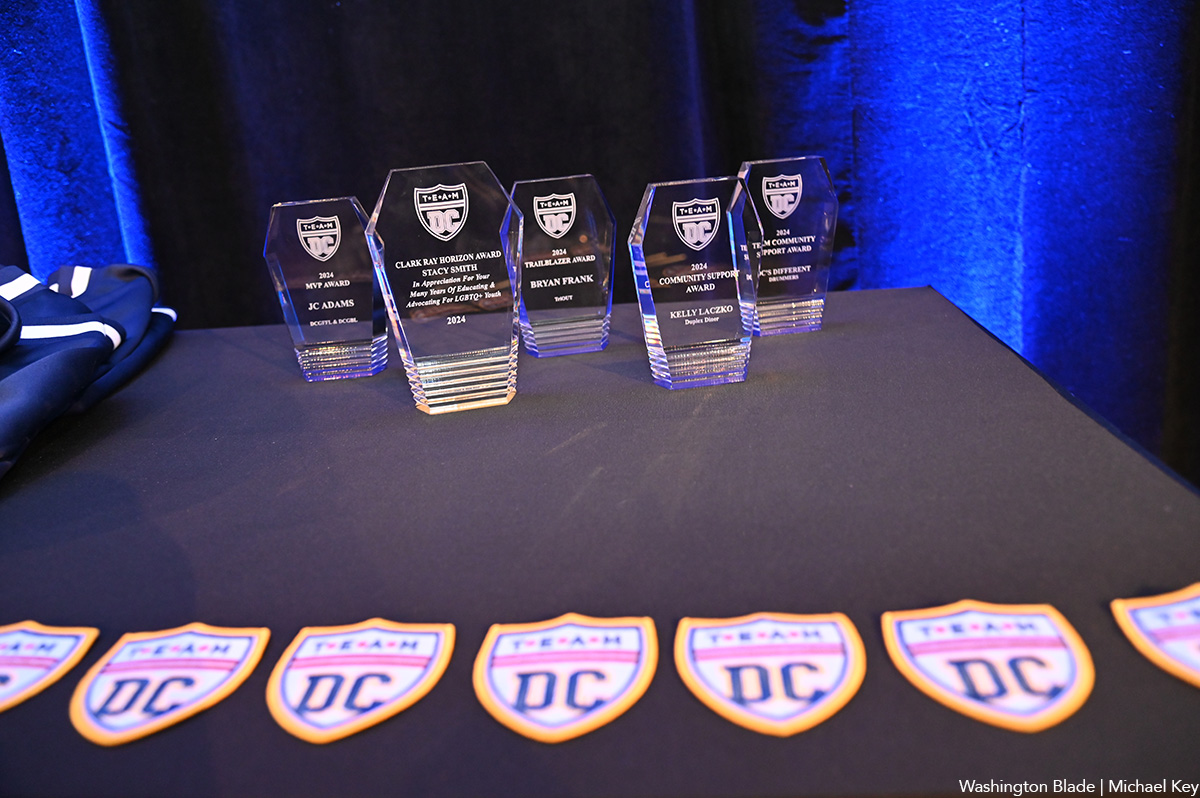
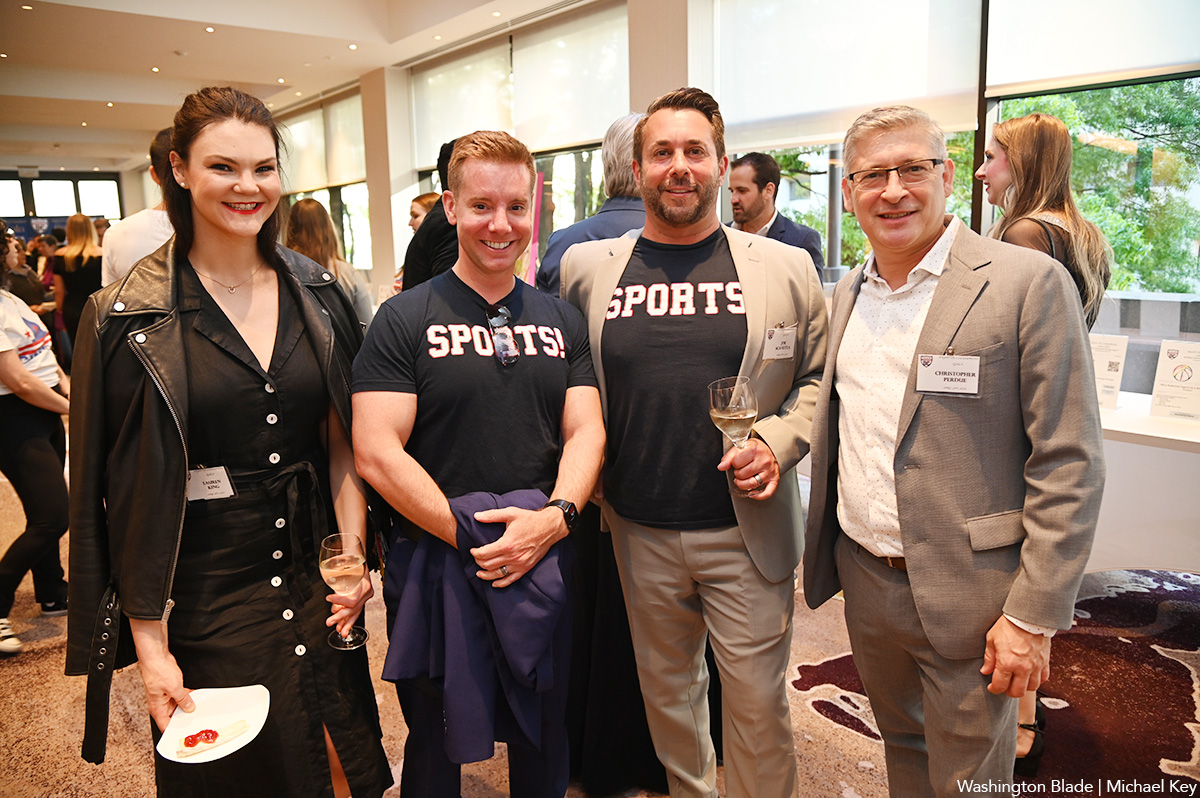
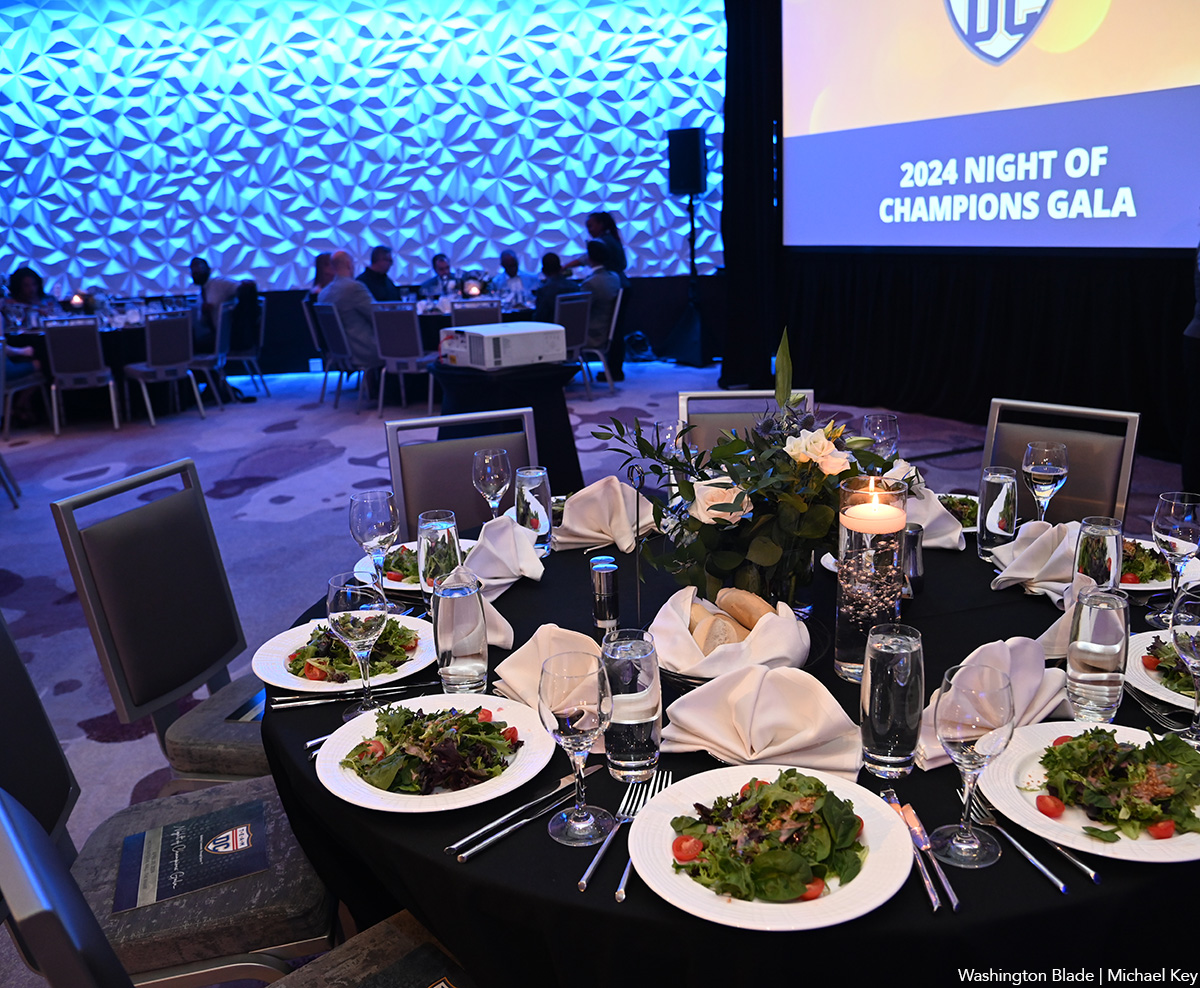
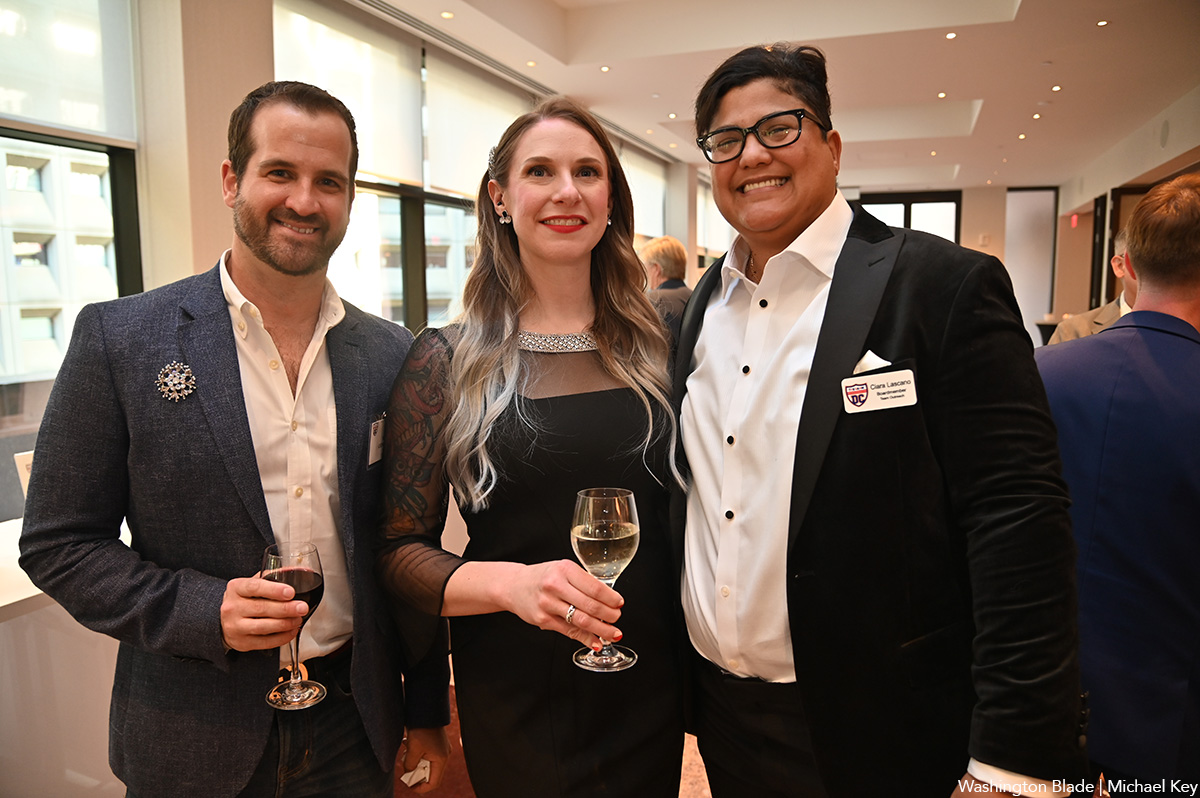
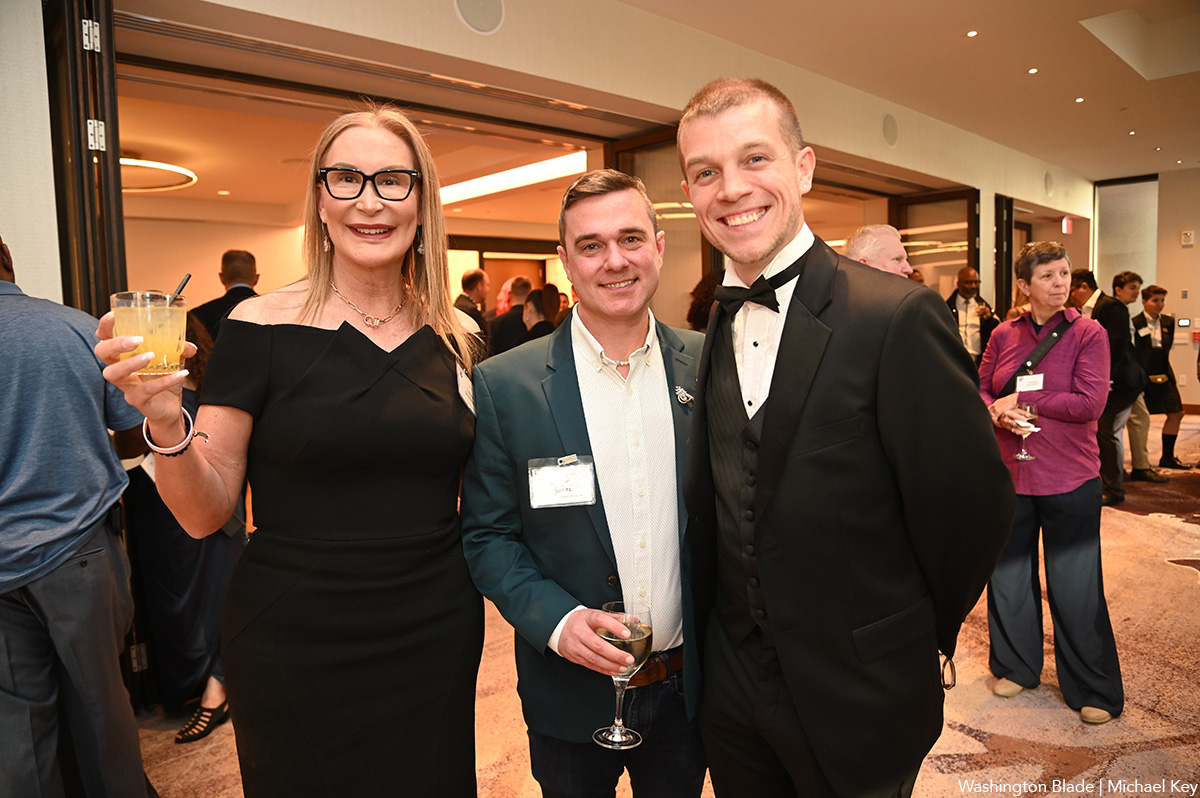
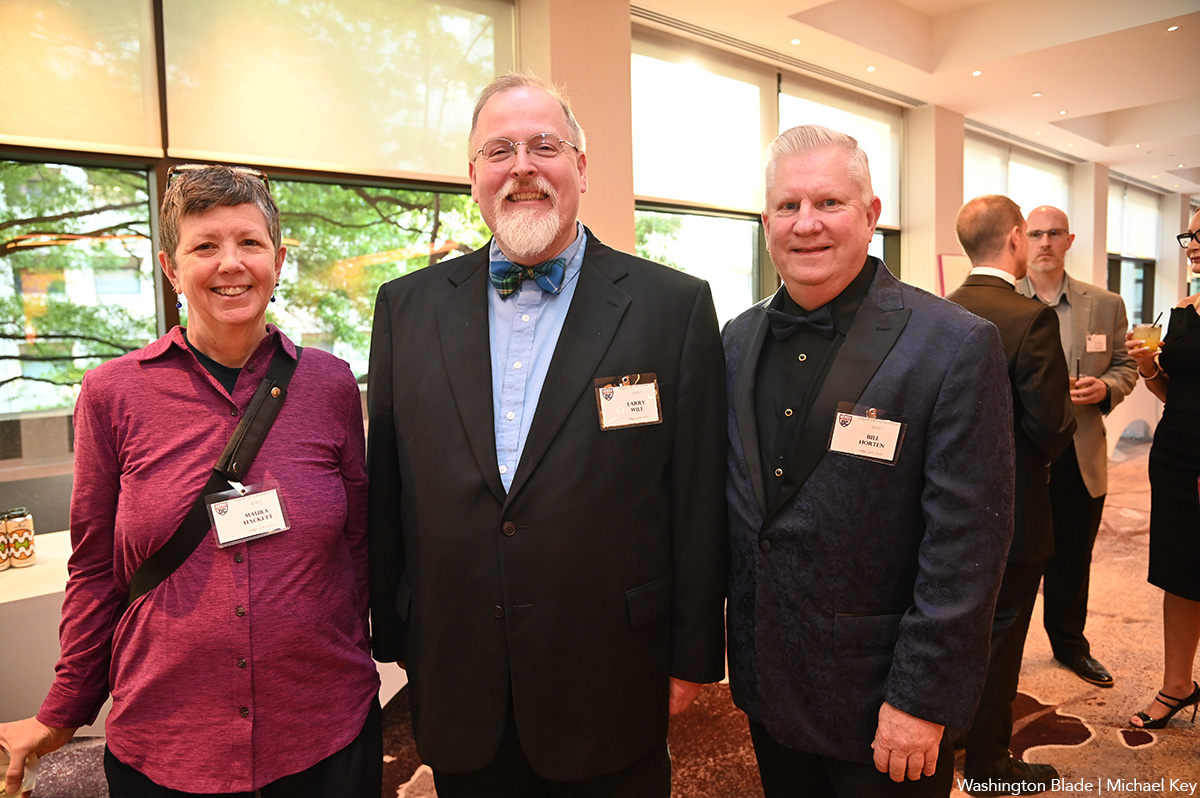
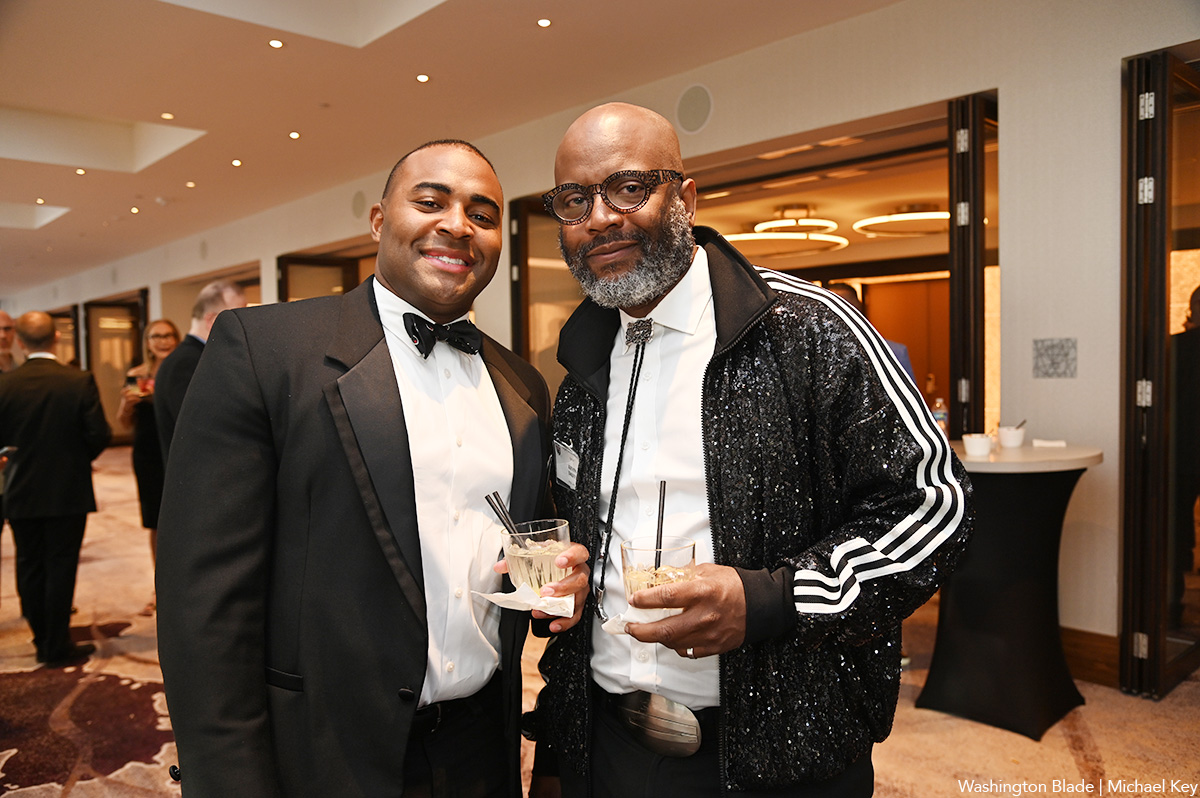
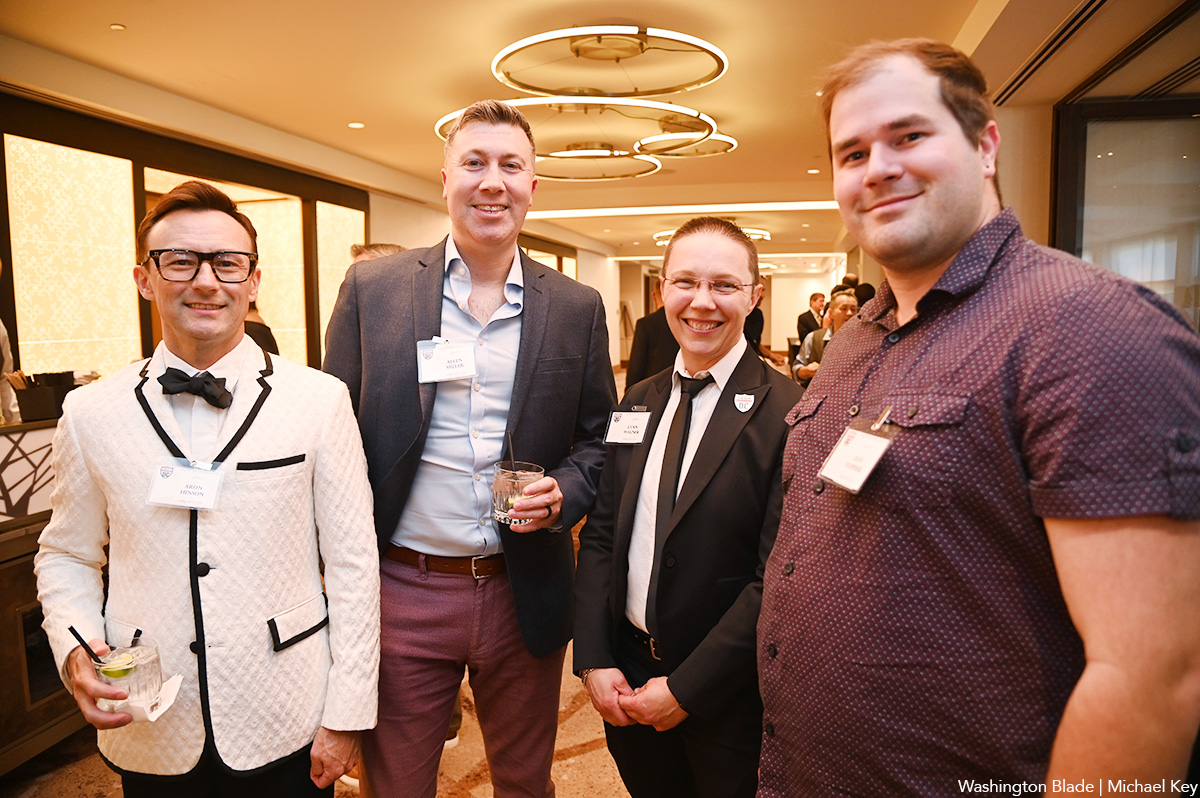
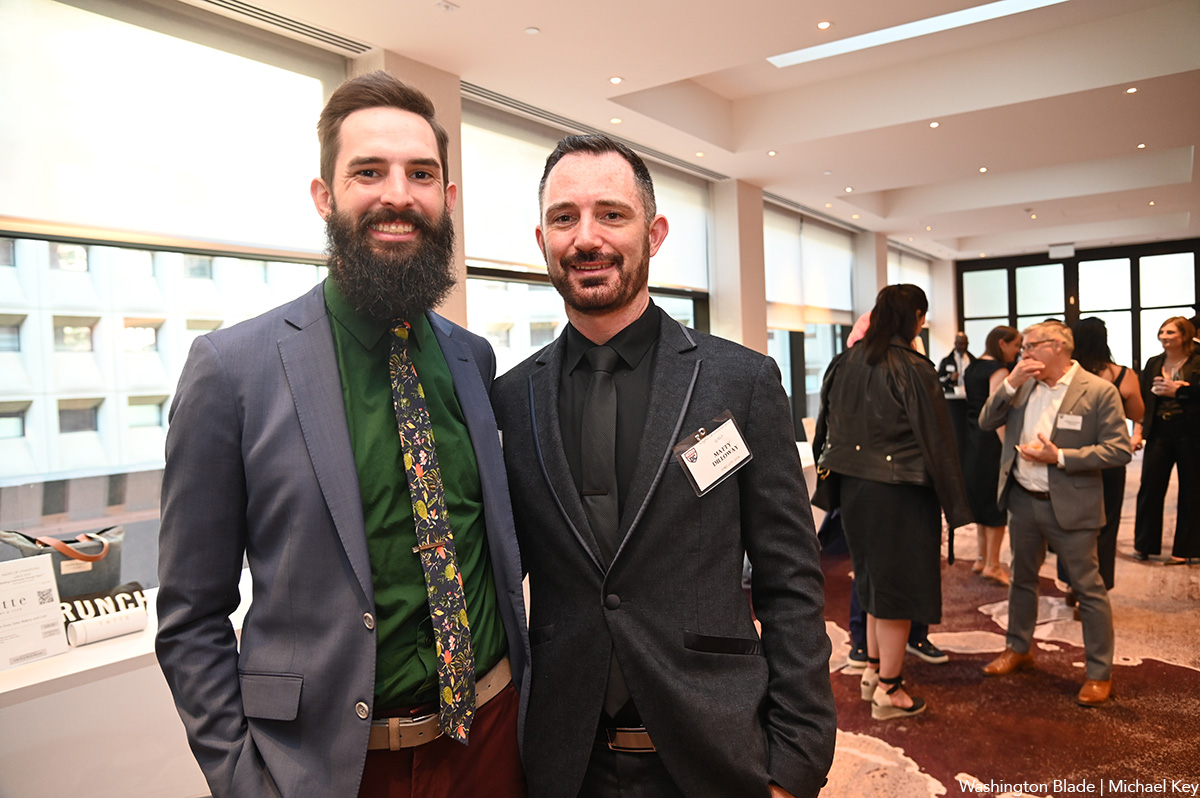
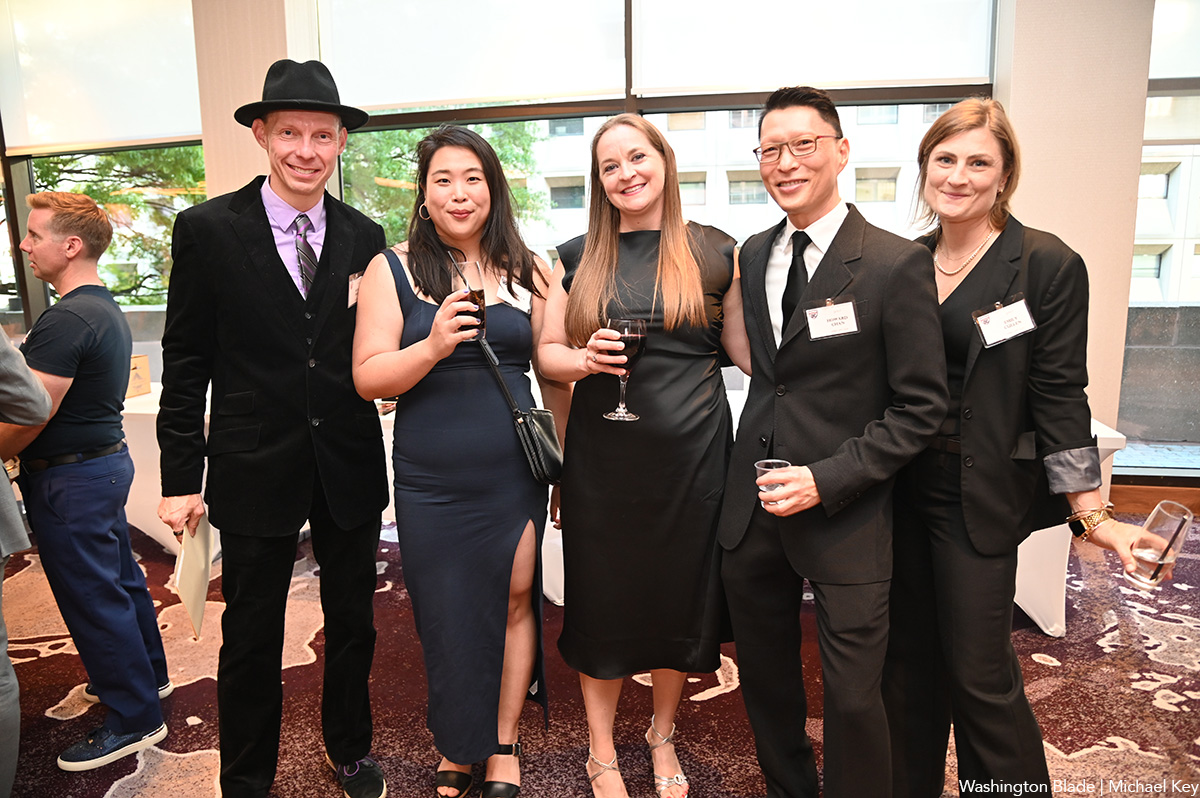
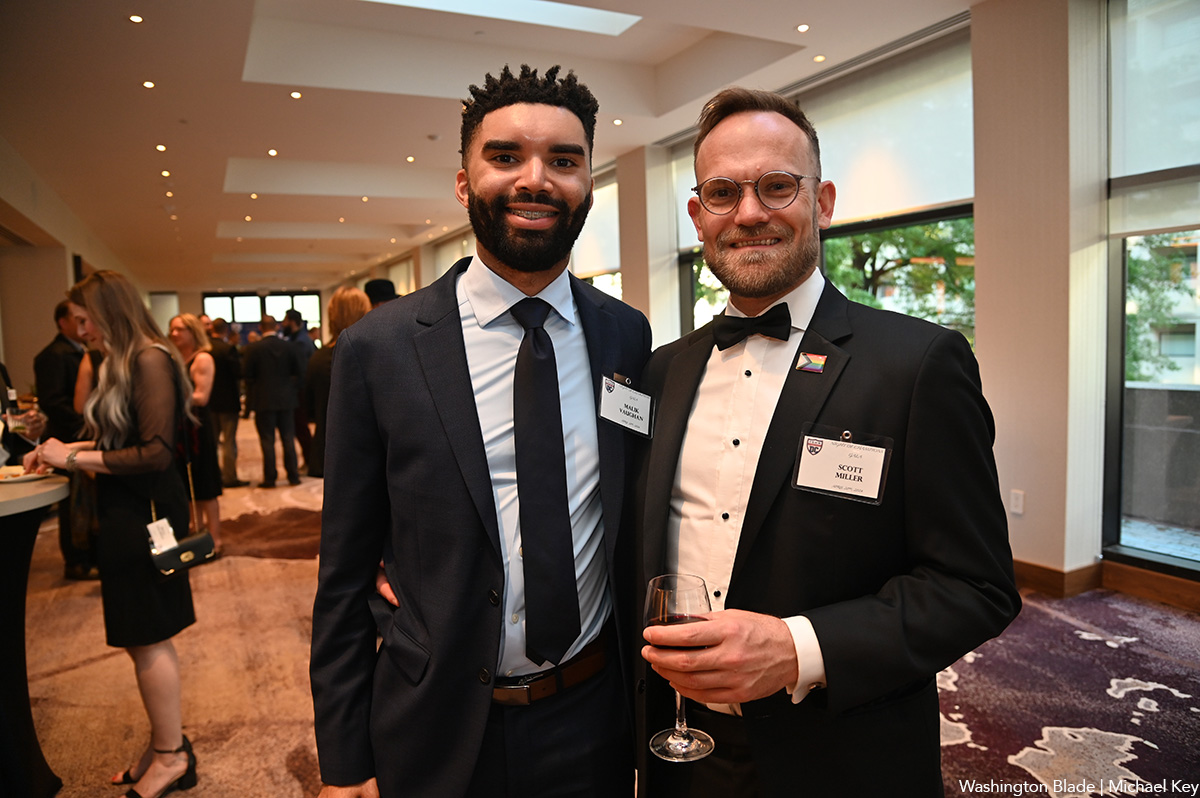
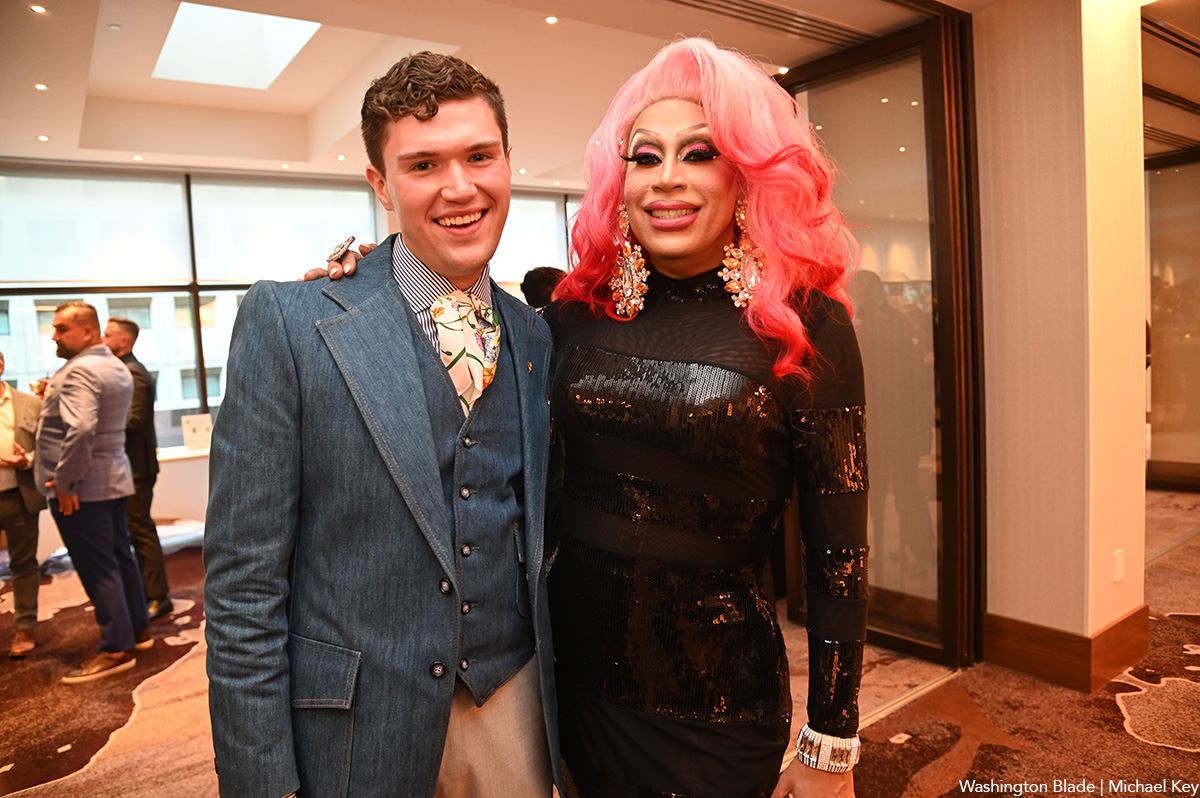
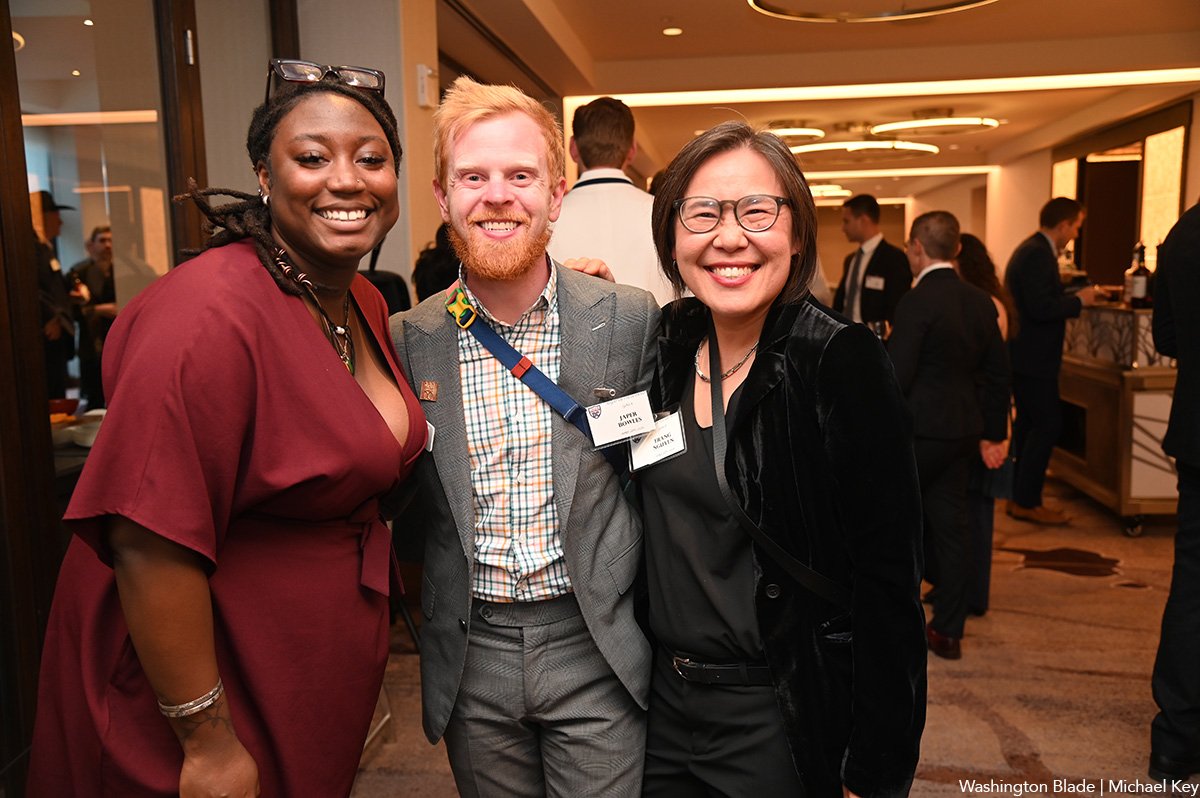
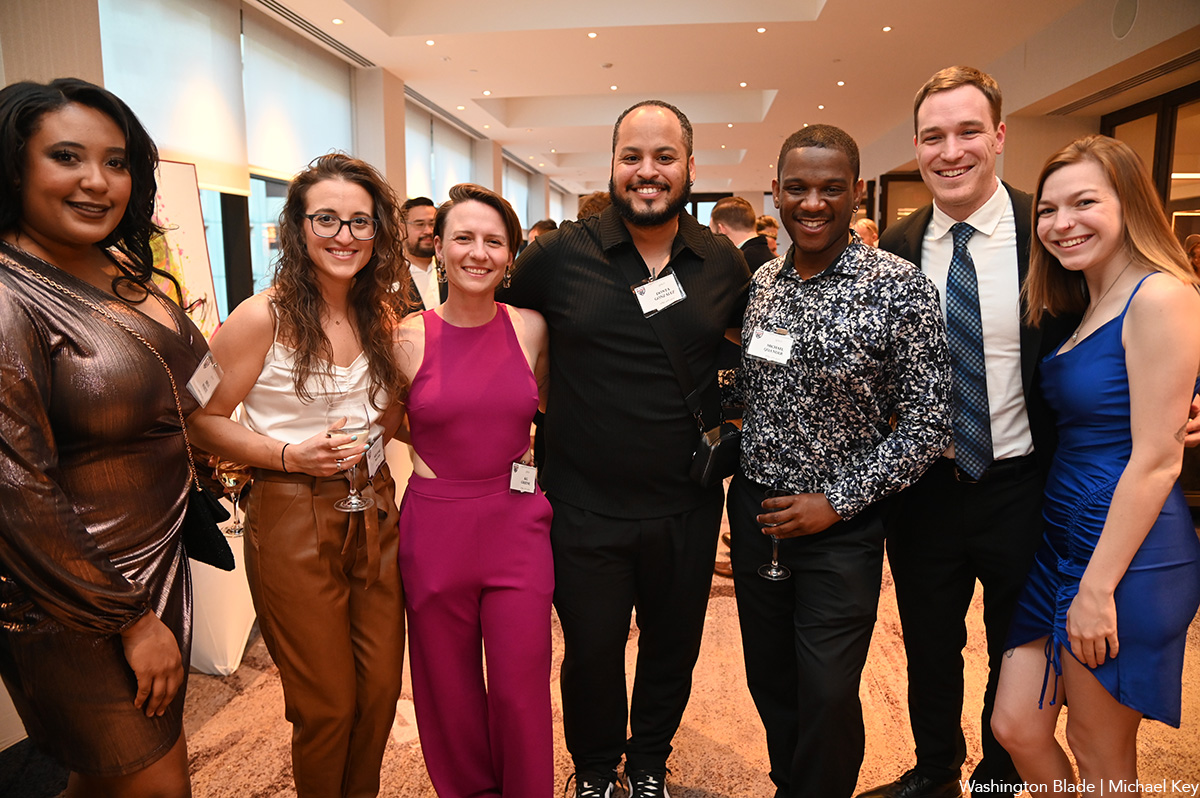
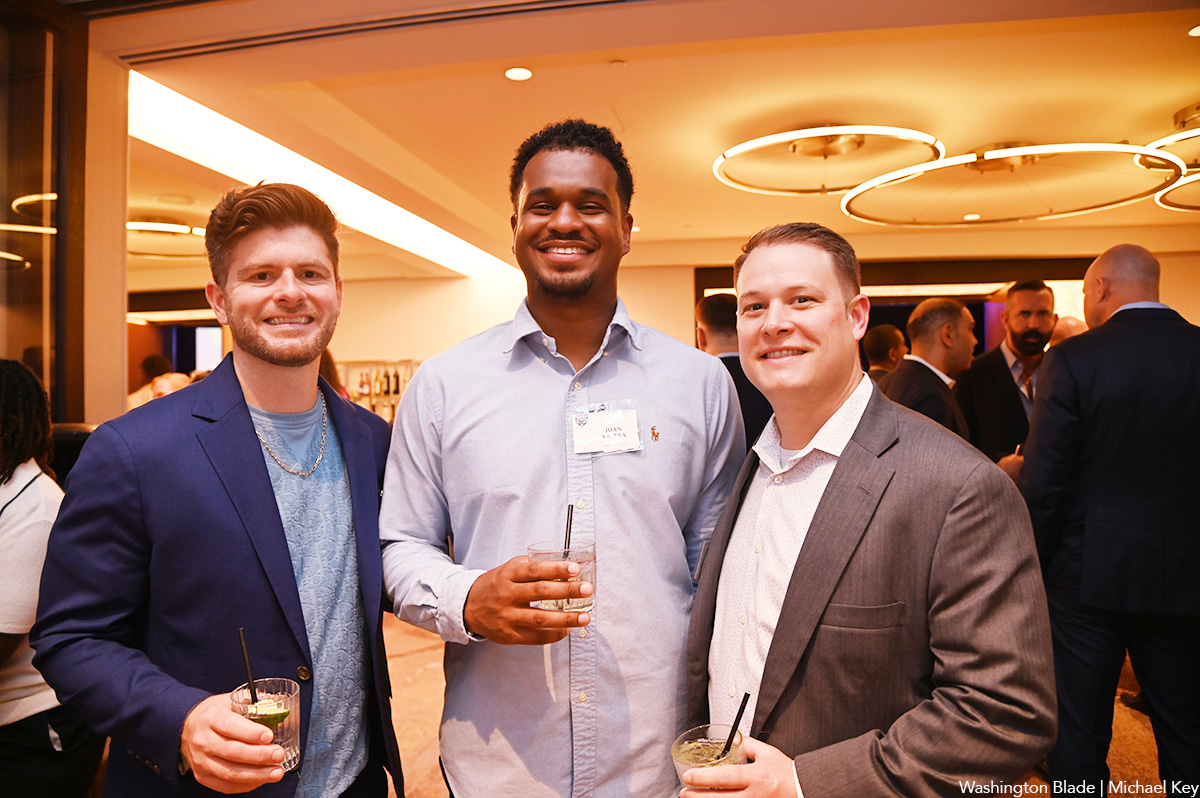
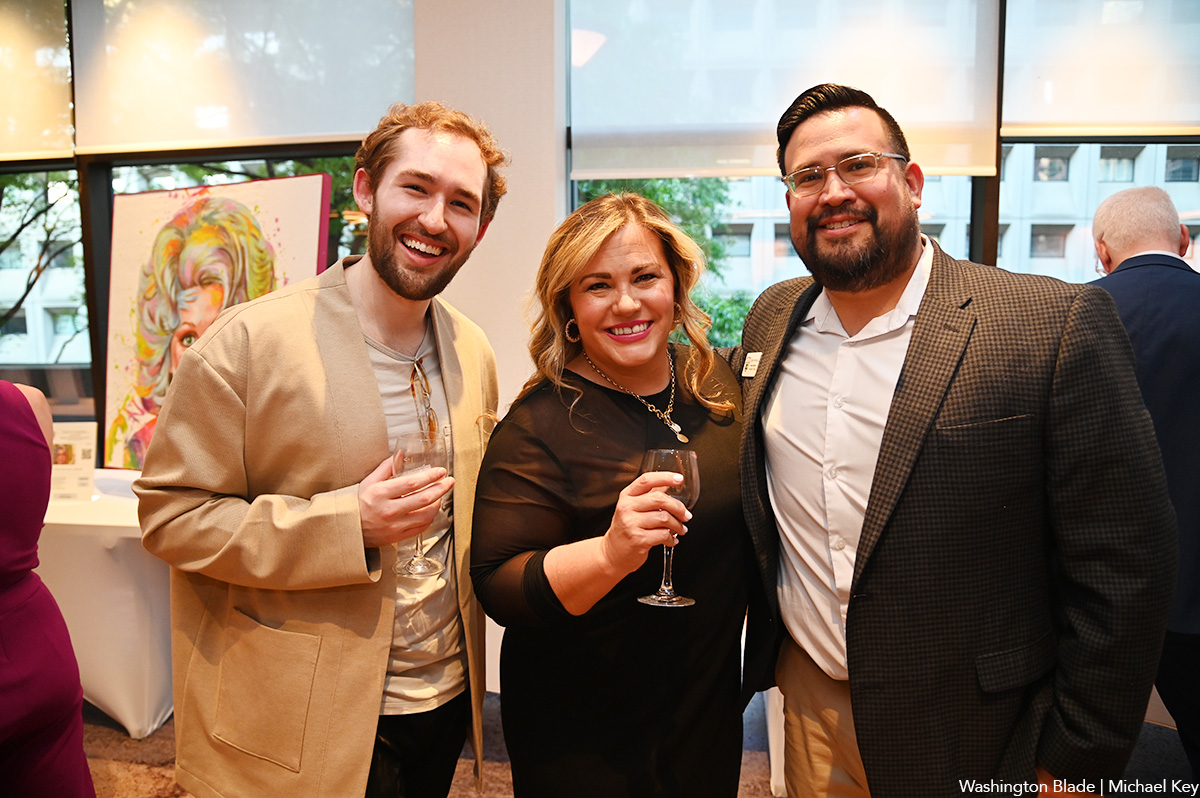
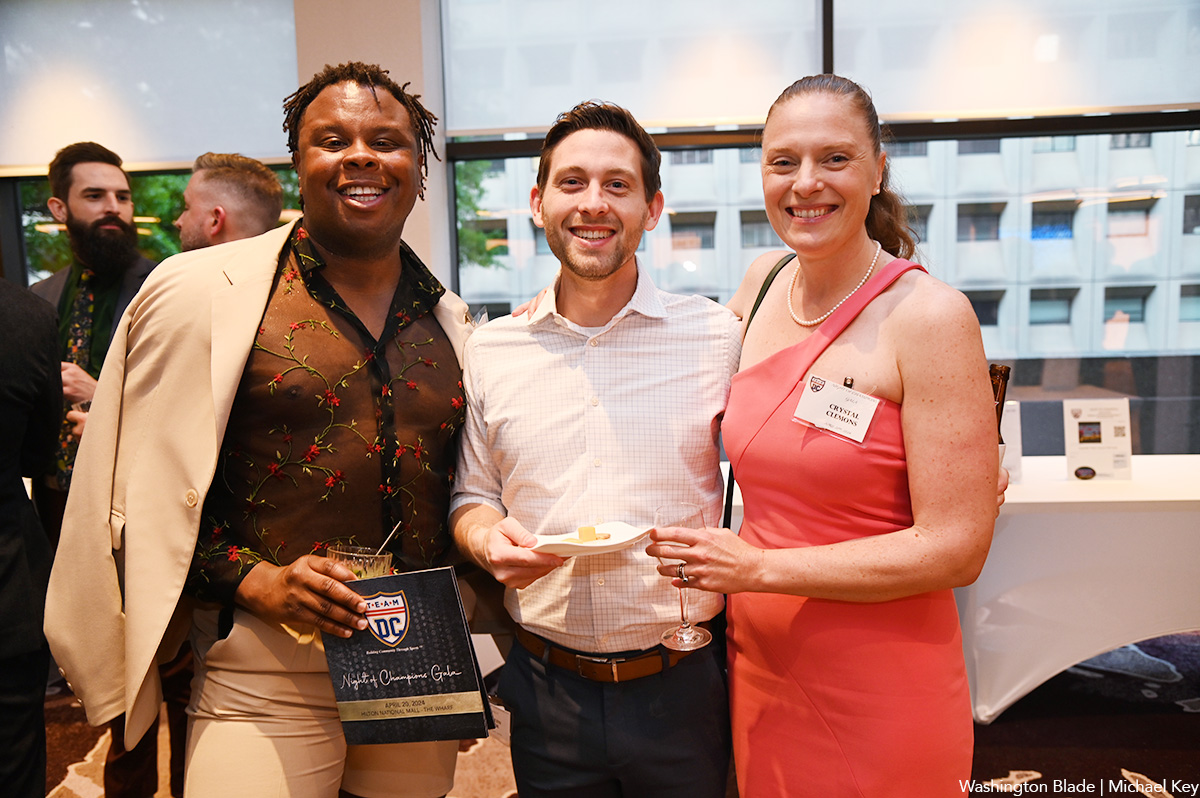
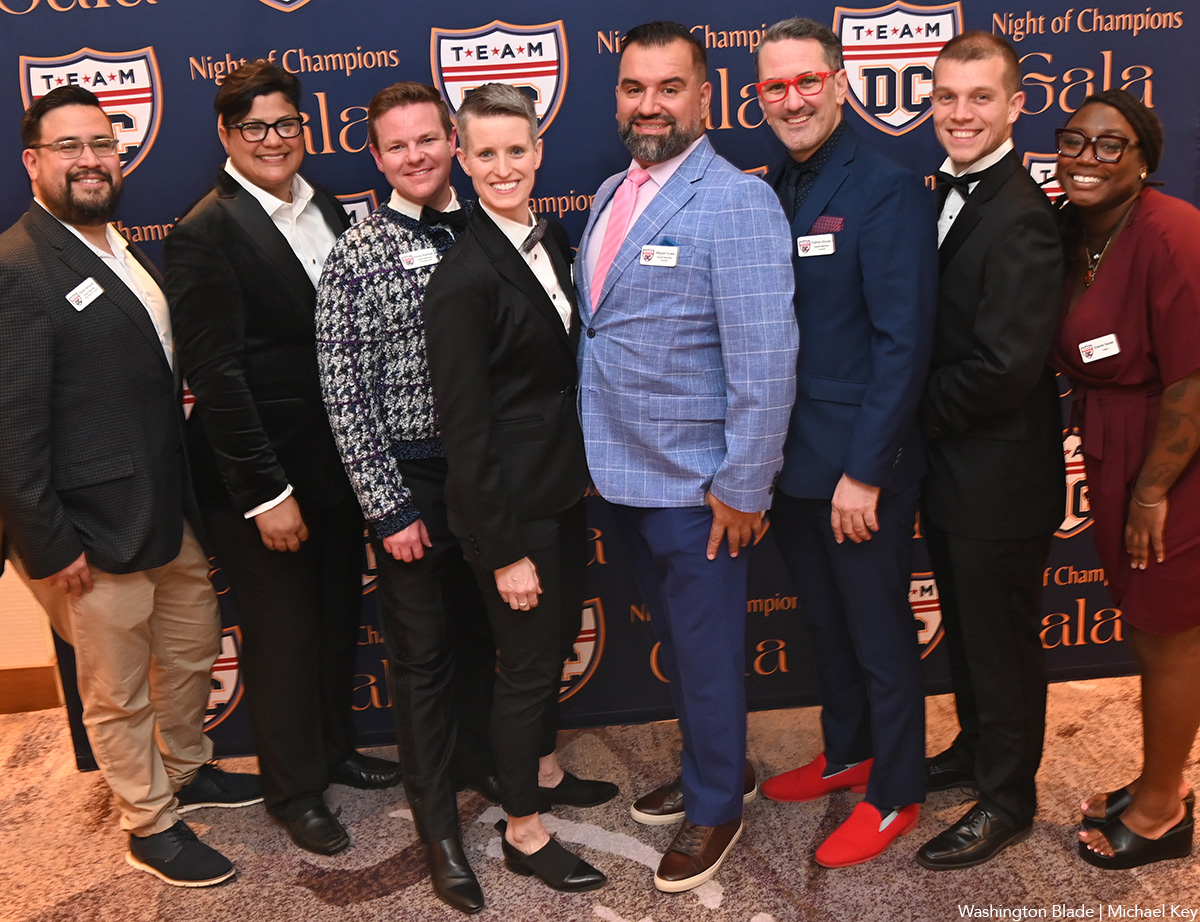
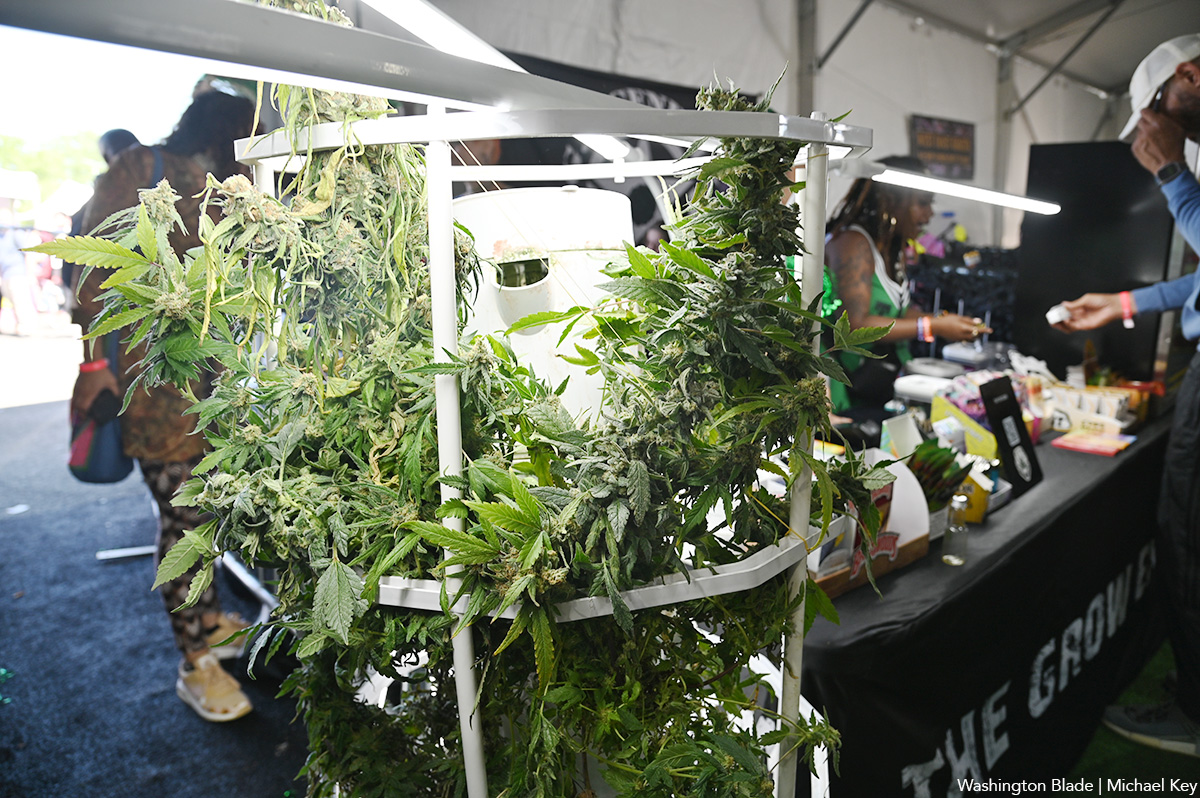
The 2024 National Cannabis Festival was held at the Fields at RFK Stadium on April 19-20.
(Washington Blade photos by Michael Key)
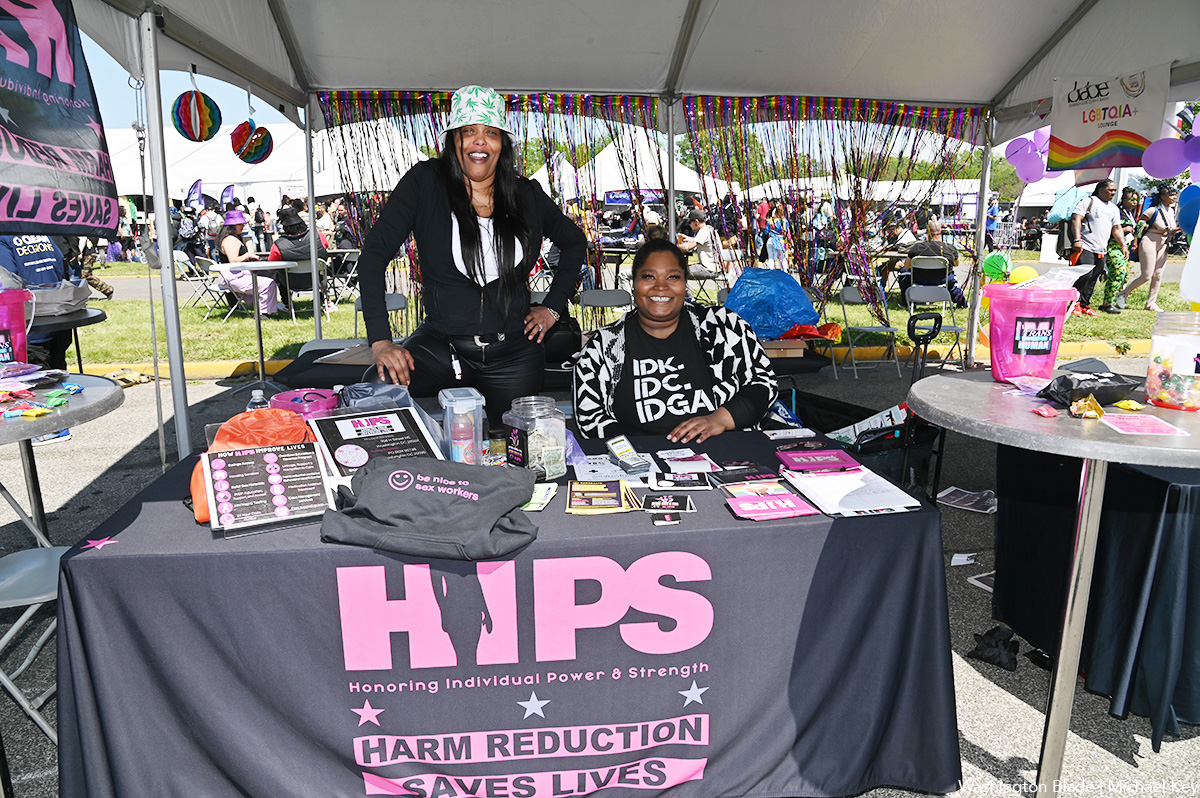
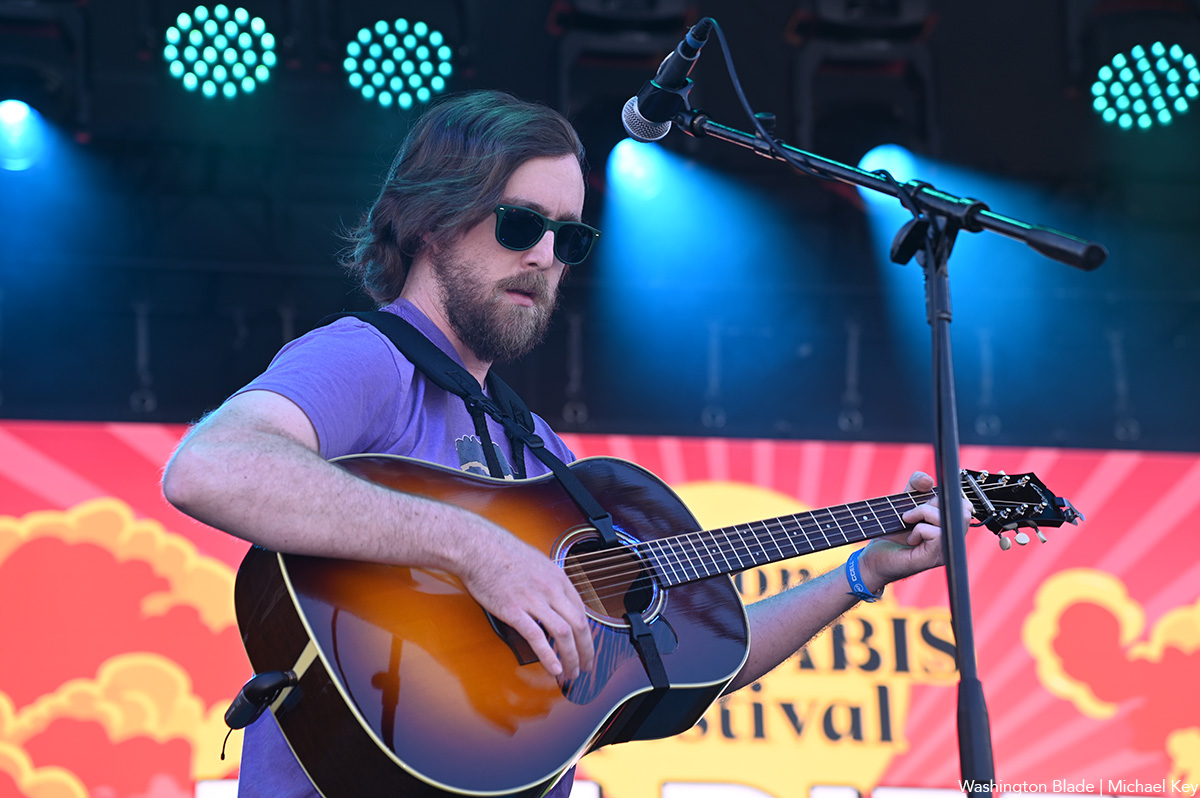
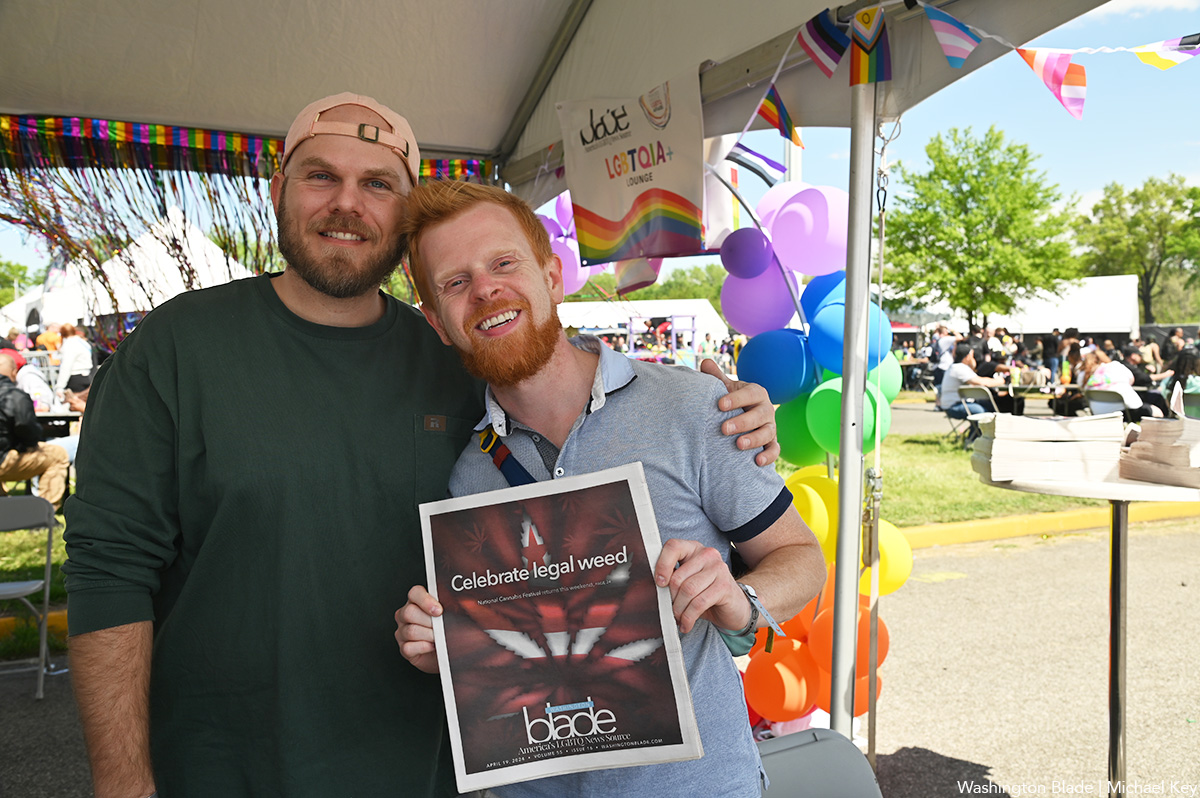
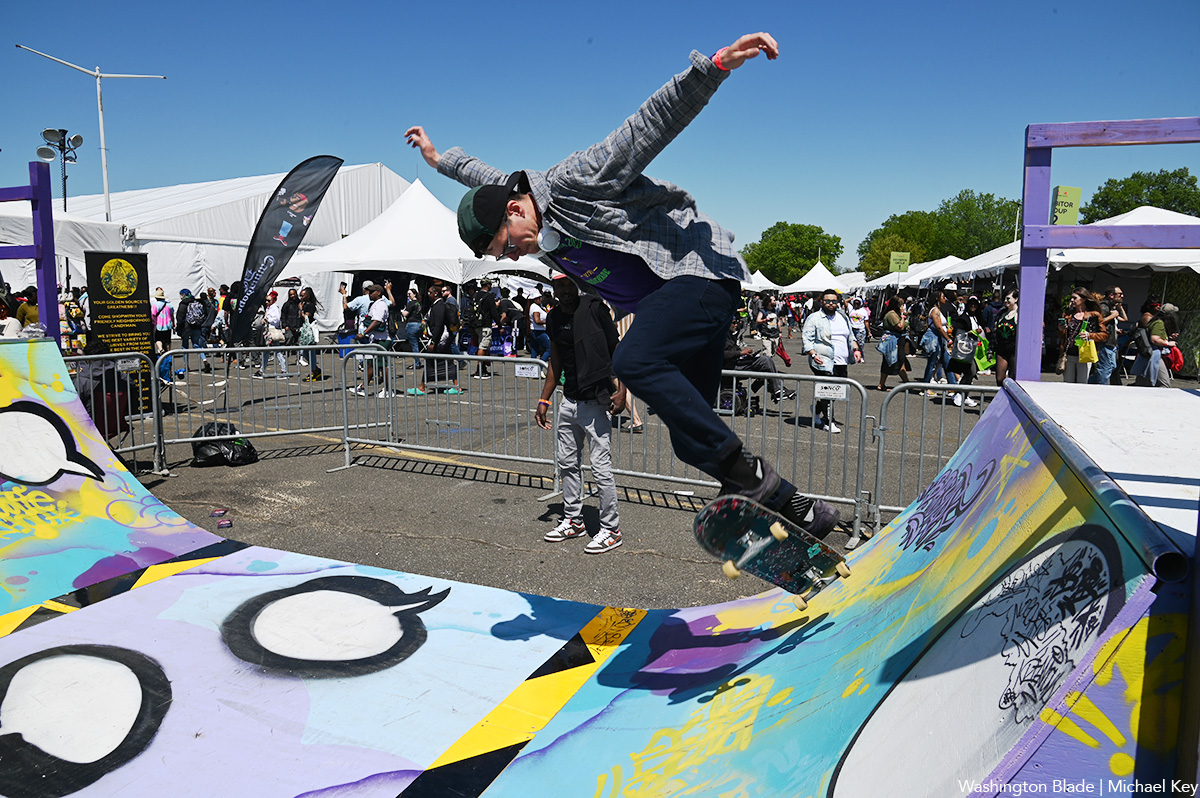
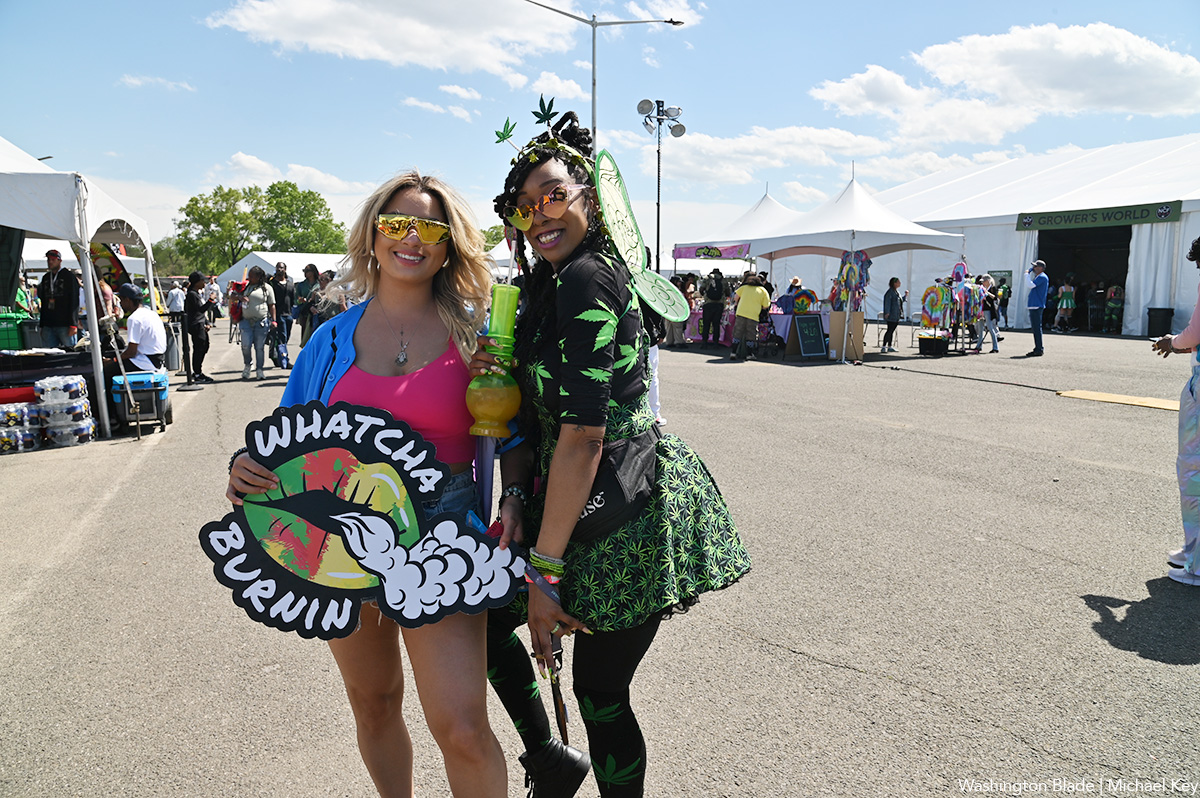
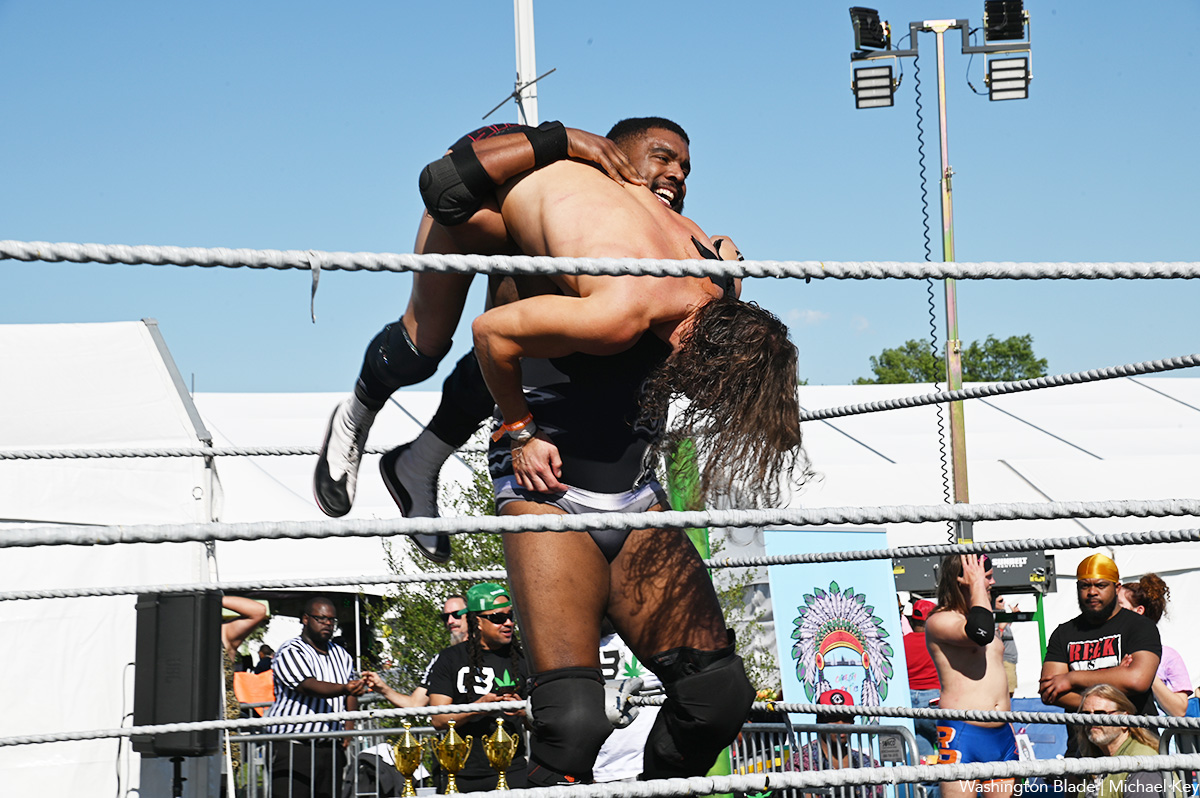
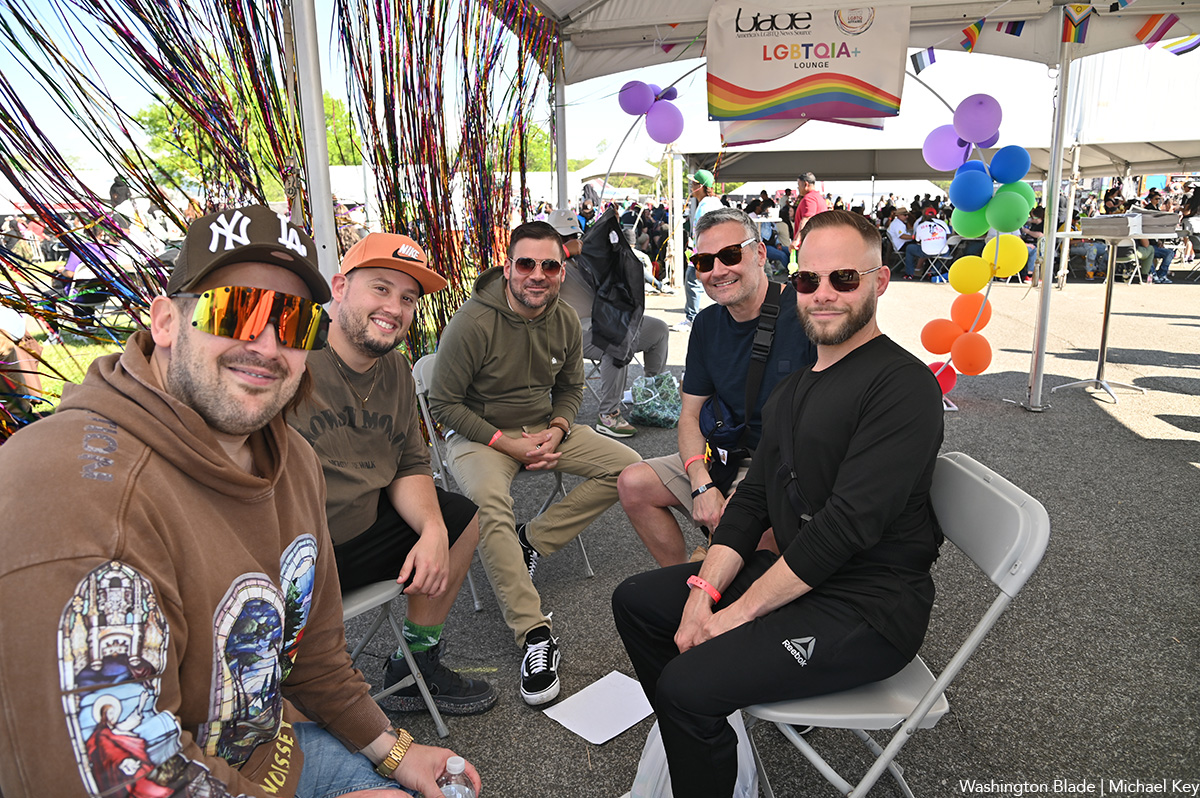
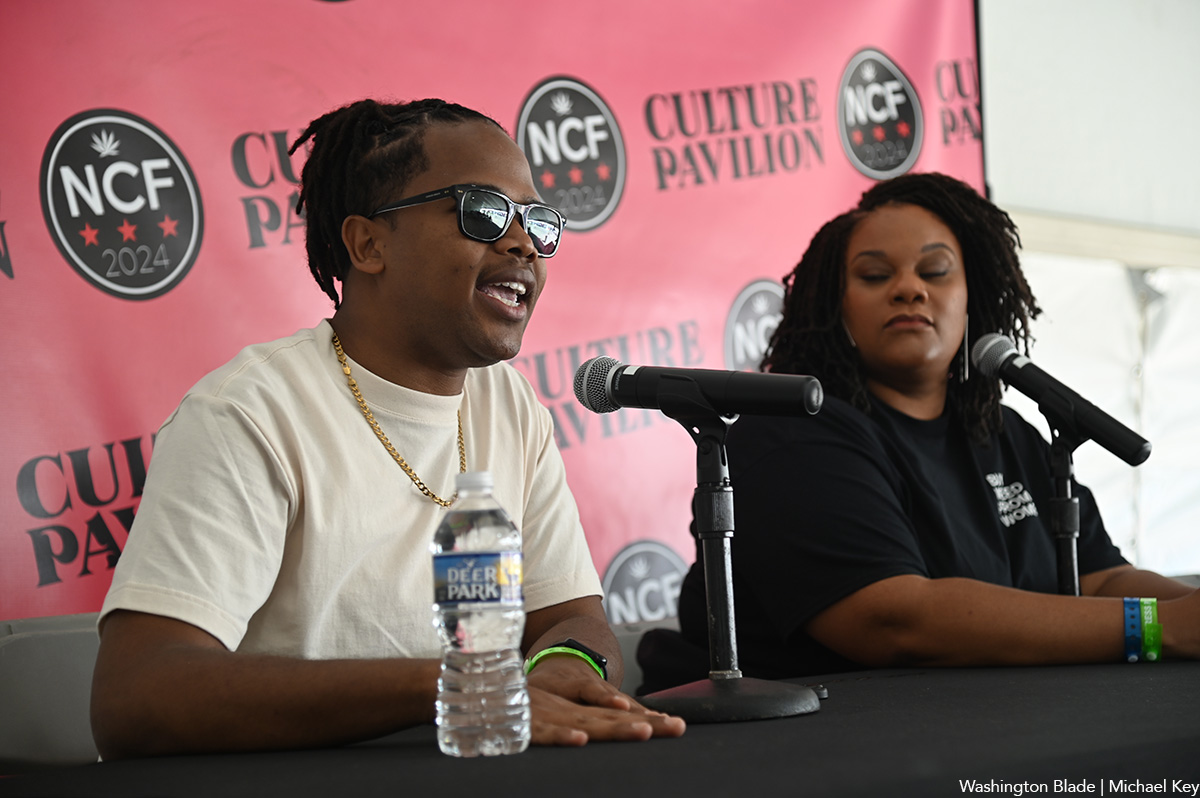
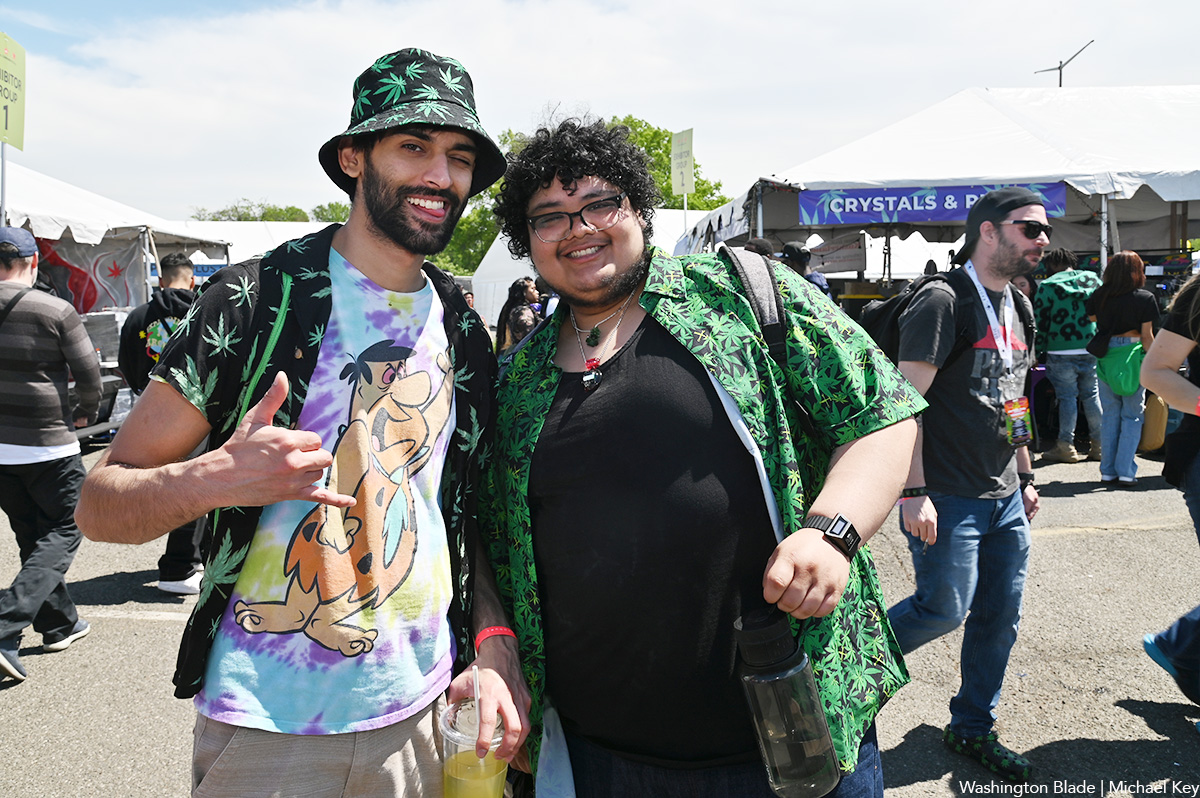
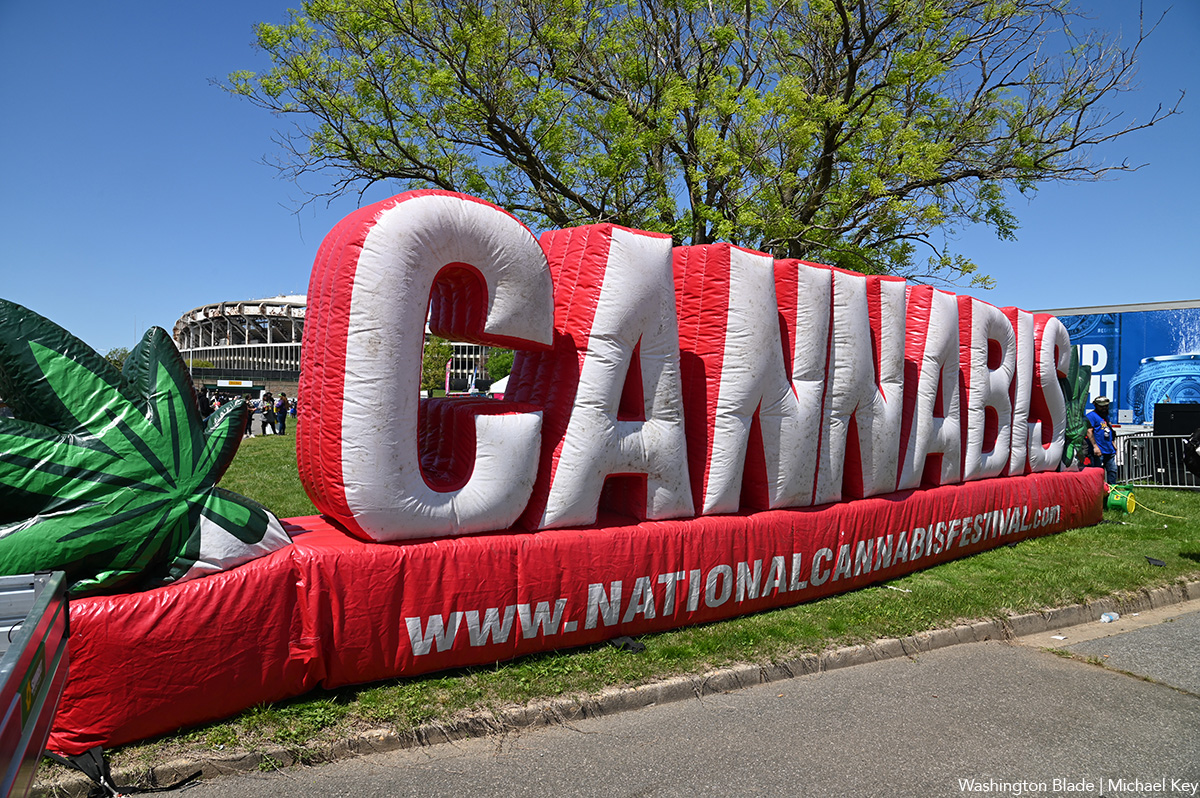
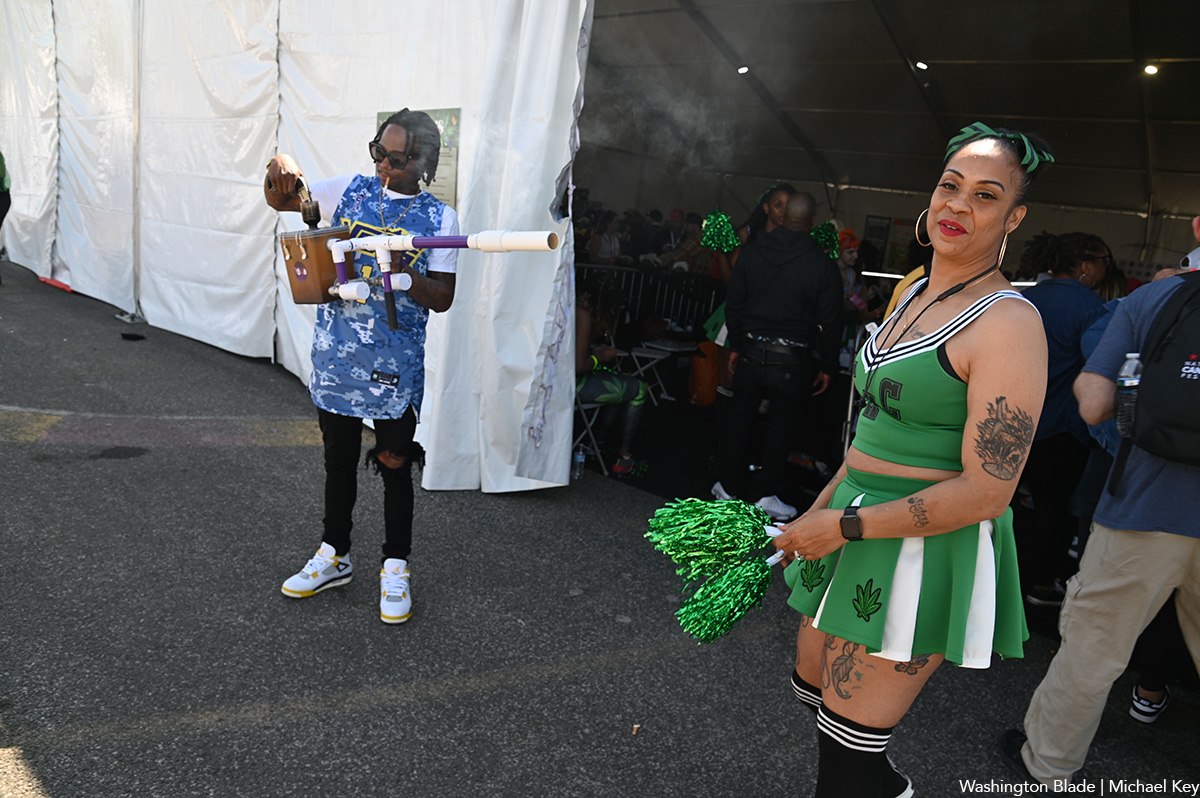

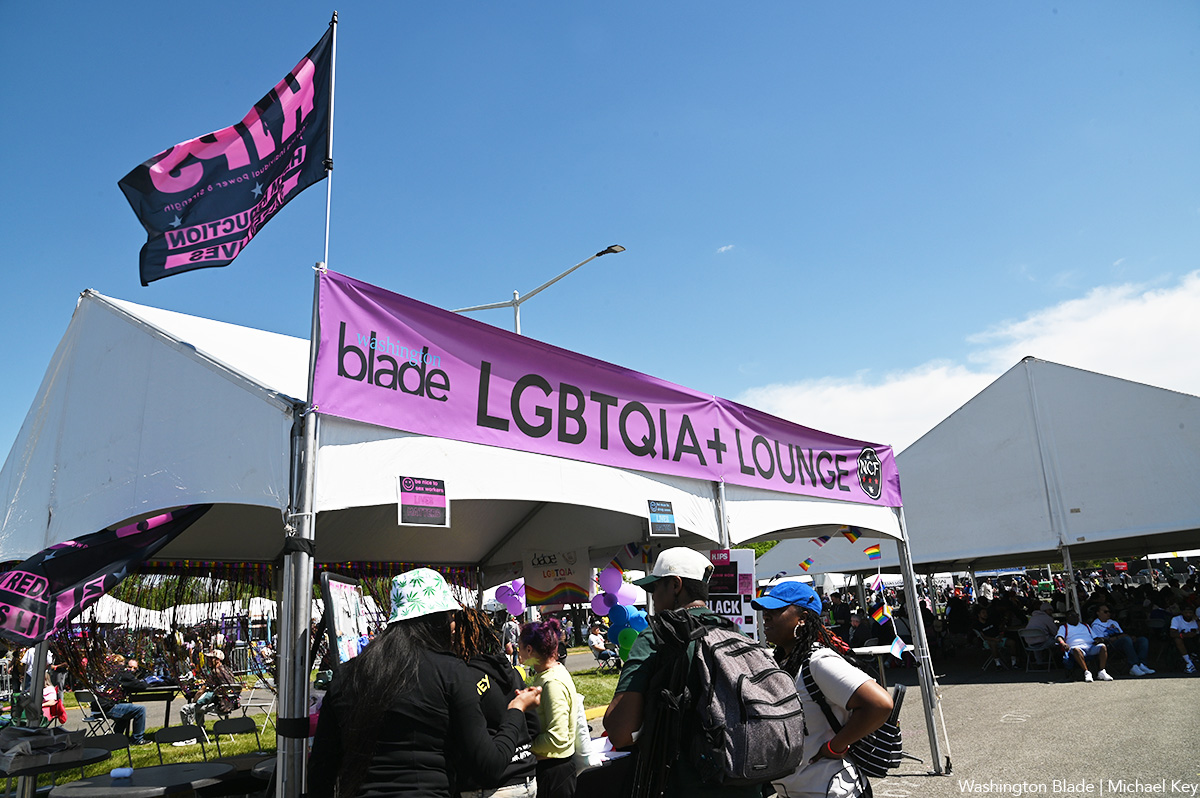
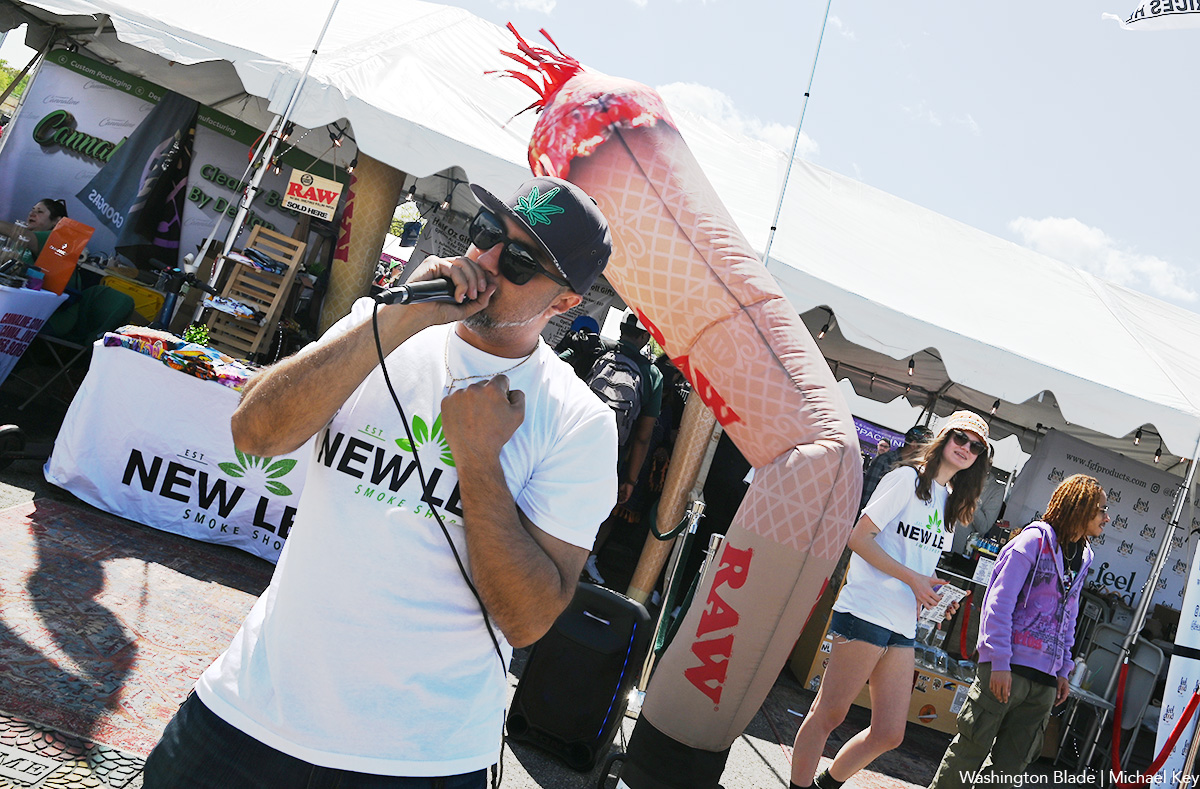
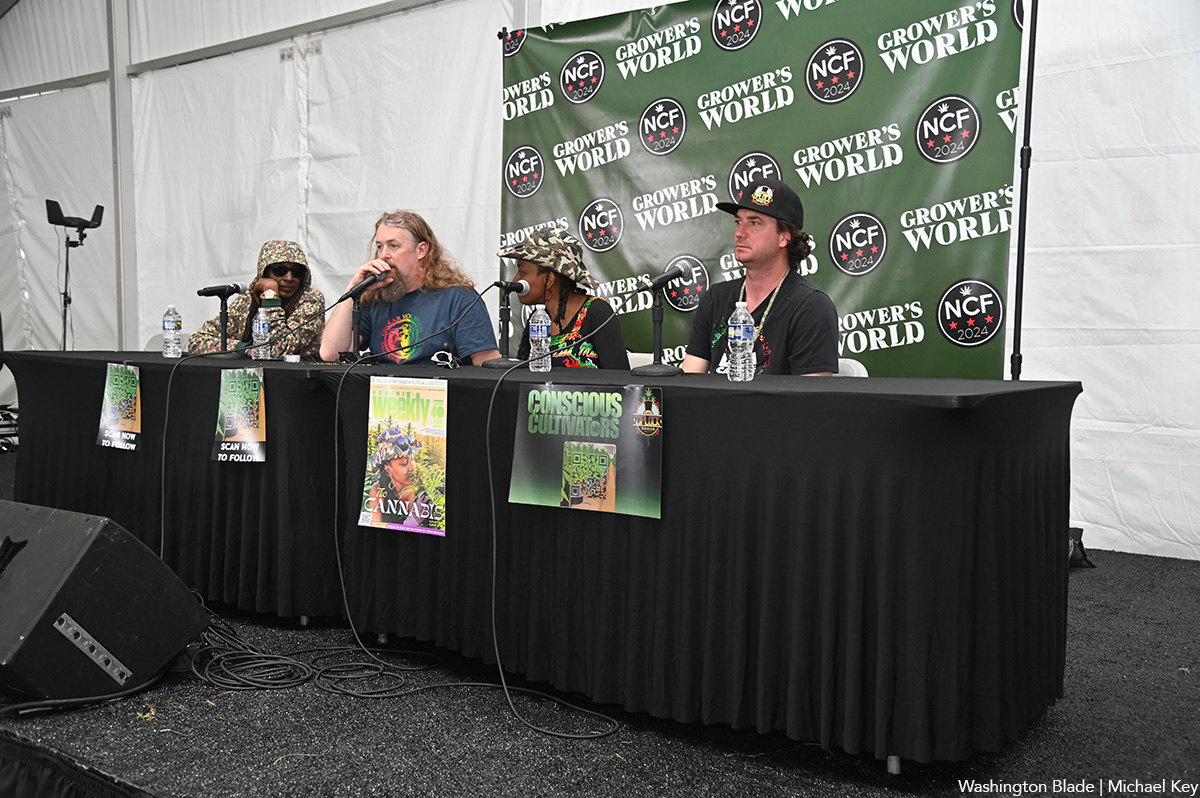
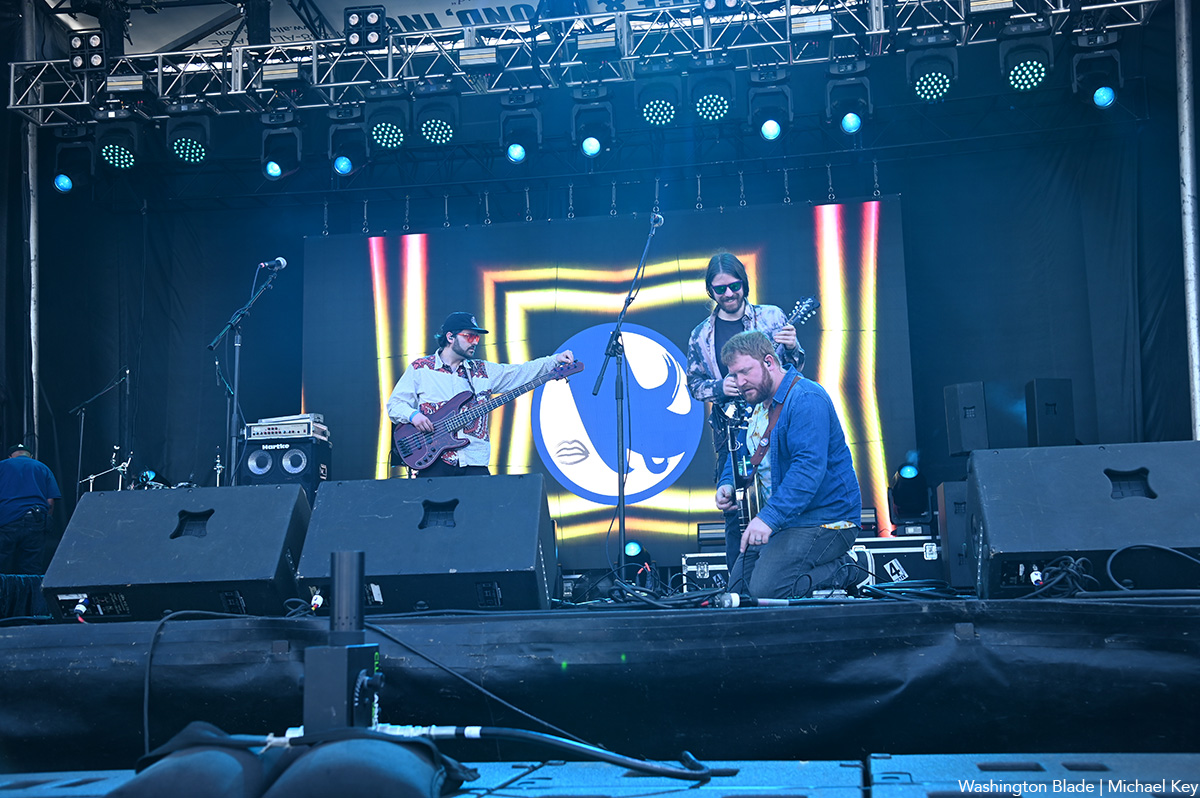
Covering the @NatlCannaFest at RFK Stadium for @WashBlade . Stop by the LGBTQ+ booth and pick up a paper if you are here. pic.twitter.com/is7hnsaPns
— Michael Patrick Key (@MichaelKeyWB) April 20, 2024
Theater
‘Amm(i)gone’ explores family, queerness, and faith
A ‘fully autobiographical’ work from out artist Adil Mansoor
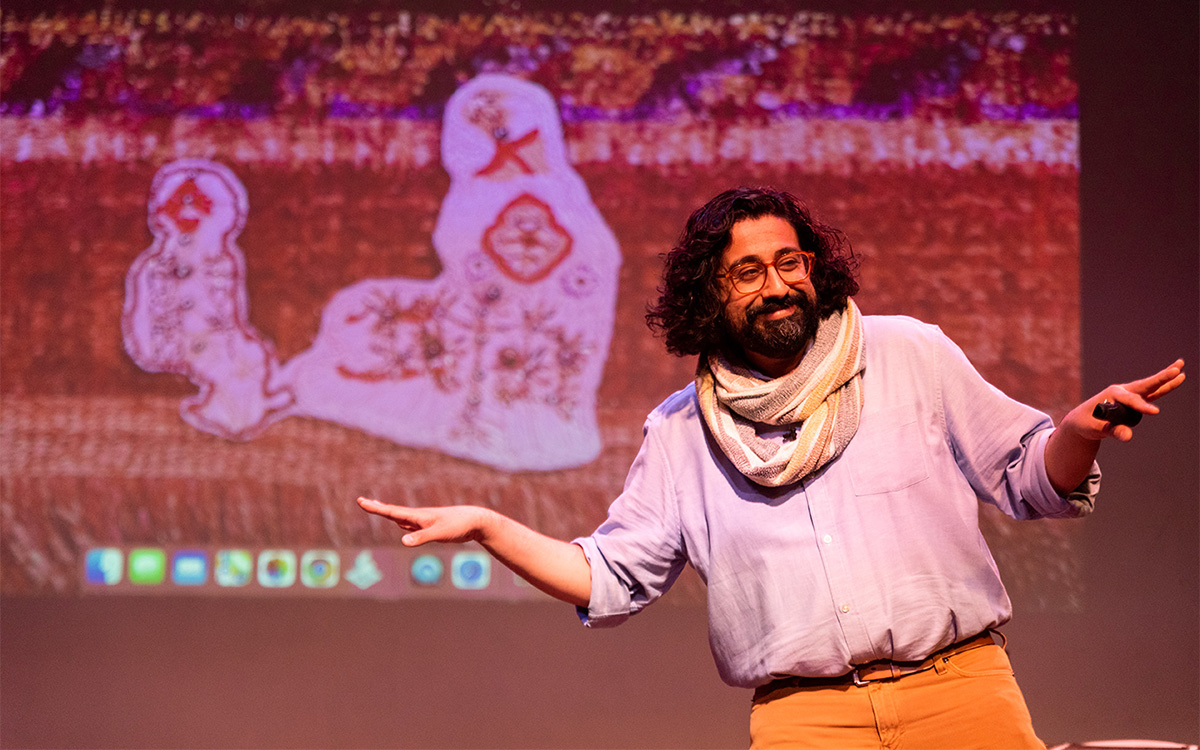
‘Amm(i)gone’
Thorough May 12
Woolly Mammoth Theatre
641 D St., N.W.
$60-$70
Woollymammoth.net
“Fully and utterly autobiographical.” That’s how Adil Mansoor describes “Amm(i)gone,” his one-man work currently playing at Woolly Mammoth Theatre.
Both created and performed by out artist Mansoor, it’s his story about inviting his Pakistani mother to translate Sophocles’s Greek tragedy “Antigone” into Urdu. Throughout the journey, there’s an exploration of family, queerness, and faith,as well as references to teachings from the Quran, and audio conversations with his Muslim mother.
Mansoor, 38, grew up in the suburbs of Chicago and is now based in Pittsburgh where he’s a busy theater maker. He’s also the founding member of Pittsburgh’s Hatch Arts Collective and the former artistic director of Dreams of Hope, an LGBTQ youth arts organization.
WASHINGTON BLADE: What spurred you to create “Amm(i)gone”?
ADIL MANSOOR: I was reading a translation of “Antigone” a few years back and found myself emotionally overwhelmed. A Theban princess buries her brother knowing it will cost her, her own life. It’s about a person for whom all aspirations are in the afterlife. And what does that do to the living when all of your hopes and dreams have to be reserved for the afterlife?
I found grant funding to pay my mom to do the translation. I wanted to engage in learning. I wanted to share theater but especially this ancient tragedy. My mother appreciated the characters were struggling between loving one another and their beliefs.
BLADE: Are you more director than actor?
MANSOOR: I’m primarily a director with an MFA in directing from Carnegie Mellon. I wrote, directed, and performed in this show, and had been working on it for four years. I’ve done different versions including Zoom. Woolly’s is a new production with the same team who’ve been involved since the beginning.
I love solo performance. I’ve produced and now teach solo performance and believe in its power. And I definitely lean toward “performance” and I haven’t “acted” since I was in college. I feel good on stage. I was a tour guide and do a lot of public speaking. I enjoy the attention.
BLADE: Describe your mom.
MANSOOR: My mom is a wonderfully devout Muslim, single mother, social worker who discovered my queerness on Google. And she prays for me.
She and I are similar, the way we look at things, the way we laugh. But different too. And those are among the questions I ask in this show. Our relationship is both beautiful and complicated.
BLADE: So, you weren’t exactly hiding your sexuality?
MANSOOR: In my mid-20s, I took time to talk with friends about our being queer with relation to our careers. My sexuality is essential to the work. As the artistic director at Dreams of Hope, part of the work was to model what it means to be public. If I’m in a room with queer and trans teenagers, part of what I’m doing is modeling queer adulthood. The way they see me in the world is part of what I’m putting out there. And I want that to be expansive and full.
So much of my work involves fundraising and being a face in schools. Being out is about making safe space for queer young folks.
BLADE: Have you encountered much Islamophobia?
MANSOOR: When 9/11 happened, I was a sophomore in high school, so yes. I faced a lot then and now. I’ve been egged on the street in the last four months. I see it in the classroom. It shows up in all sorts of ways.
BLADE: What prompted you to lead your creative life in Pittsburgh?
MANSOOR: I’ve been here for 14 years. I breathe with ease in Pittsburgh. The hills and the valleys and the rust of the city do something to me. It’s beautiful, it’ affordable, and there is support for local artists. There’s a lot of opportunity.
Still, the plan was to move to New York in September of 2020 but that was cancelled. Then the pandemic showed me that I could live in Pittsburgh and still have a nationally viable career.
BLADE: What are you trying to achieve with “Amm(i)gone”?
MANSOOR: What I’m sharing in the show is so very specific but I hear people from other backgrounds say I totally see my mom in that. My partner is Catholic and we share so much in relation to this.
I hope the work is embracing the fullness of queerness and how means so many things. And I hope the show makes audiences want to call their parents or squeeze their partners.

